
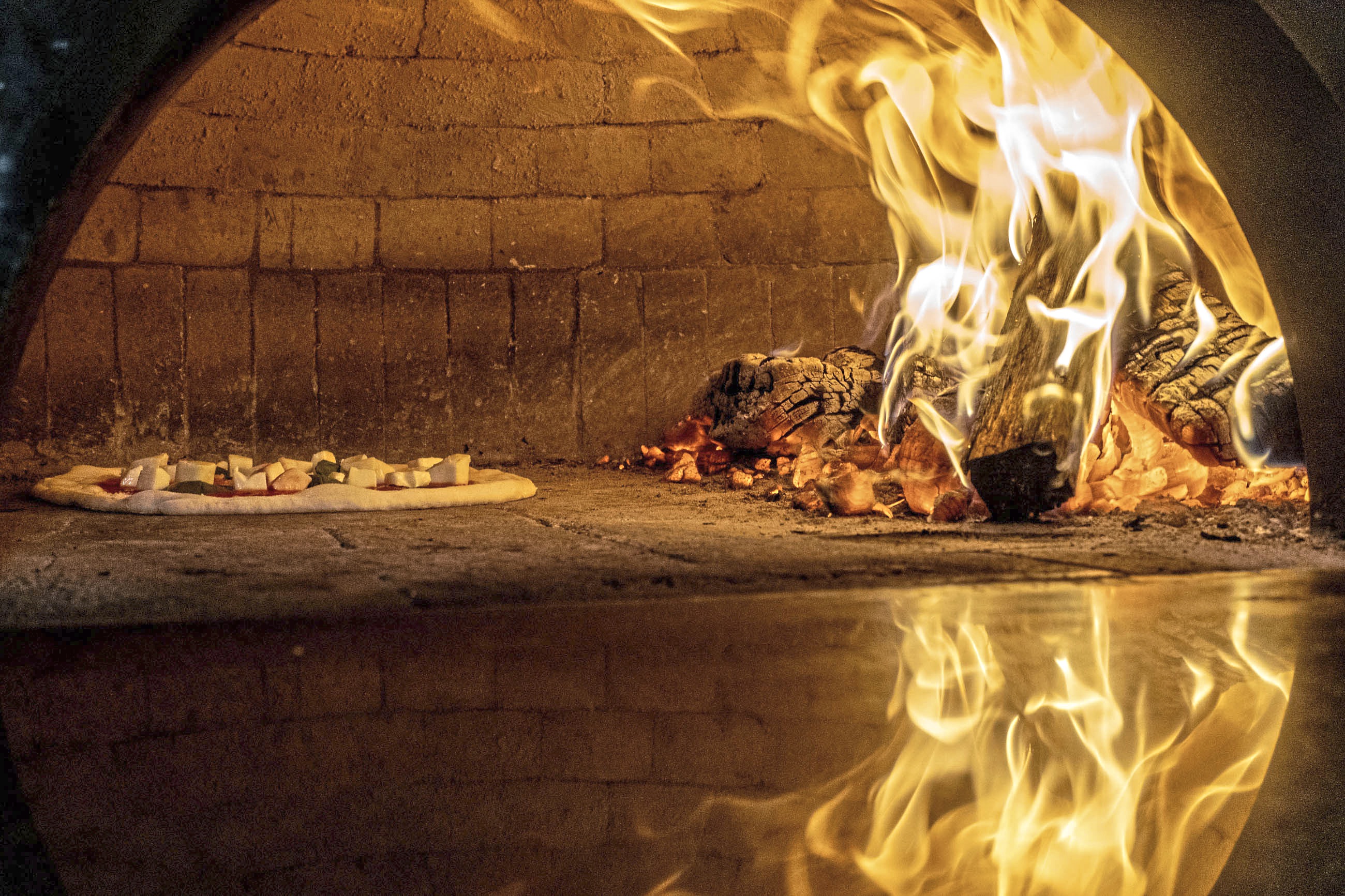
Pizza is personal. And pizza is communal. We stack box upon box of it to share when we watch sports, celebrate birthdays and sit through day-long meetings. We order massive pies to feed the family on busy nights. We seek indulgence in individual pies and slices.
Various studies name our region as one of most pizza-dense in the country, some estimating that there are nearly four pizzerias per square mile. Many are good, too. But why stop at good? You can find outstanding pizza in Western Pennsylvania if you know where to look.
Here’s what makes Pittsburgh pizza special: The many styles to choose from. Out in White Oak is a pie that would impress even the grumpiest New York City snobs. Newcomers with a modern American baker focus are bringing fresh energy to the trade, while other pizza makers carry on the time-tested methods of their parents and grandparents. We have pizzaiolos who do wonders in wood-fired ovens and those who bake crunchy tray pizzas in gas-powered workhorses.
We’ve even created some styles of our own. Ohio Valley style, the unfairly maligned pizza topped with room-temperature cheese, was created just 45 minutes from Downtown at DiCarlo’s Pizza in Steubenville, Ohio, way back in 1945. Its tendrils now run throughout the region. And there’s Mon Valley red-top: The micro style with a second crust and a layer of sauce atop it is made only in the Monongahela River Valley near Donora.
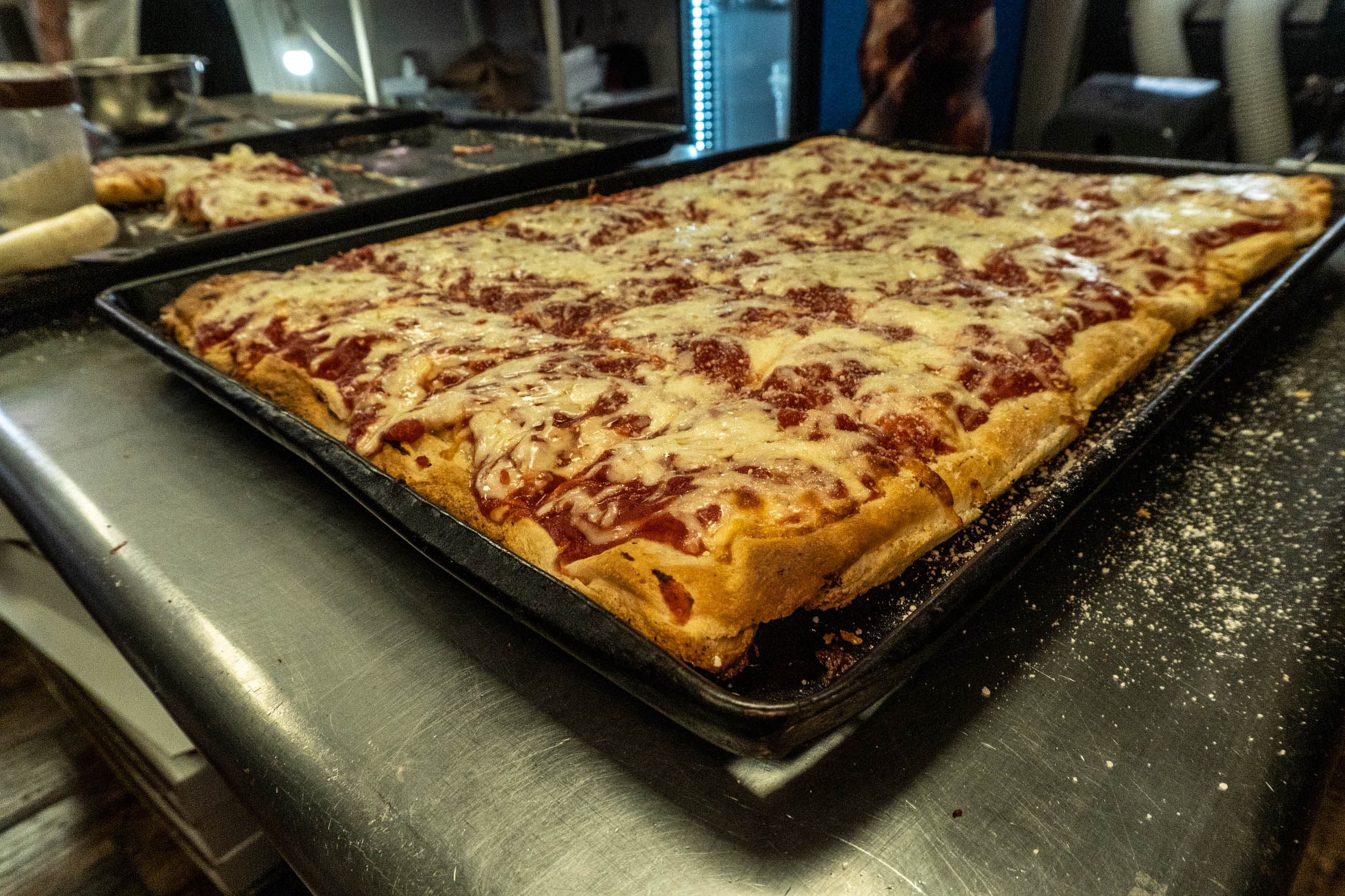
Nostalgia is a good reason for a pizza shop to be your favorite. Pittsburgh is full of iconic spots, including Aiello’s Pizza, Mineo’s Pizza House, Spak Brothers, Fiori’s Pizzaria, Frank’s Pizzeria, Vincent’s Pizza Park, Shelly Pie and Piccolo Forno. So, I get that some readers might feel salty that their longstanding favorites aren’t highlighted on this list. I respect that. I dig all of those places, too.
If there’s a single characteristic I found that ties all of the listed establishments together, it’s good dough. What comes next varies with the style of the pie. The thing that matters is that it’s balanced, and that’s what Pittsburgh’s best pizzerias do right. These are pizzas that have you reaching for the next slice without thinking about it, yet (typically) don’t leave you lethargic after eating it.
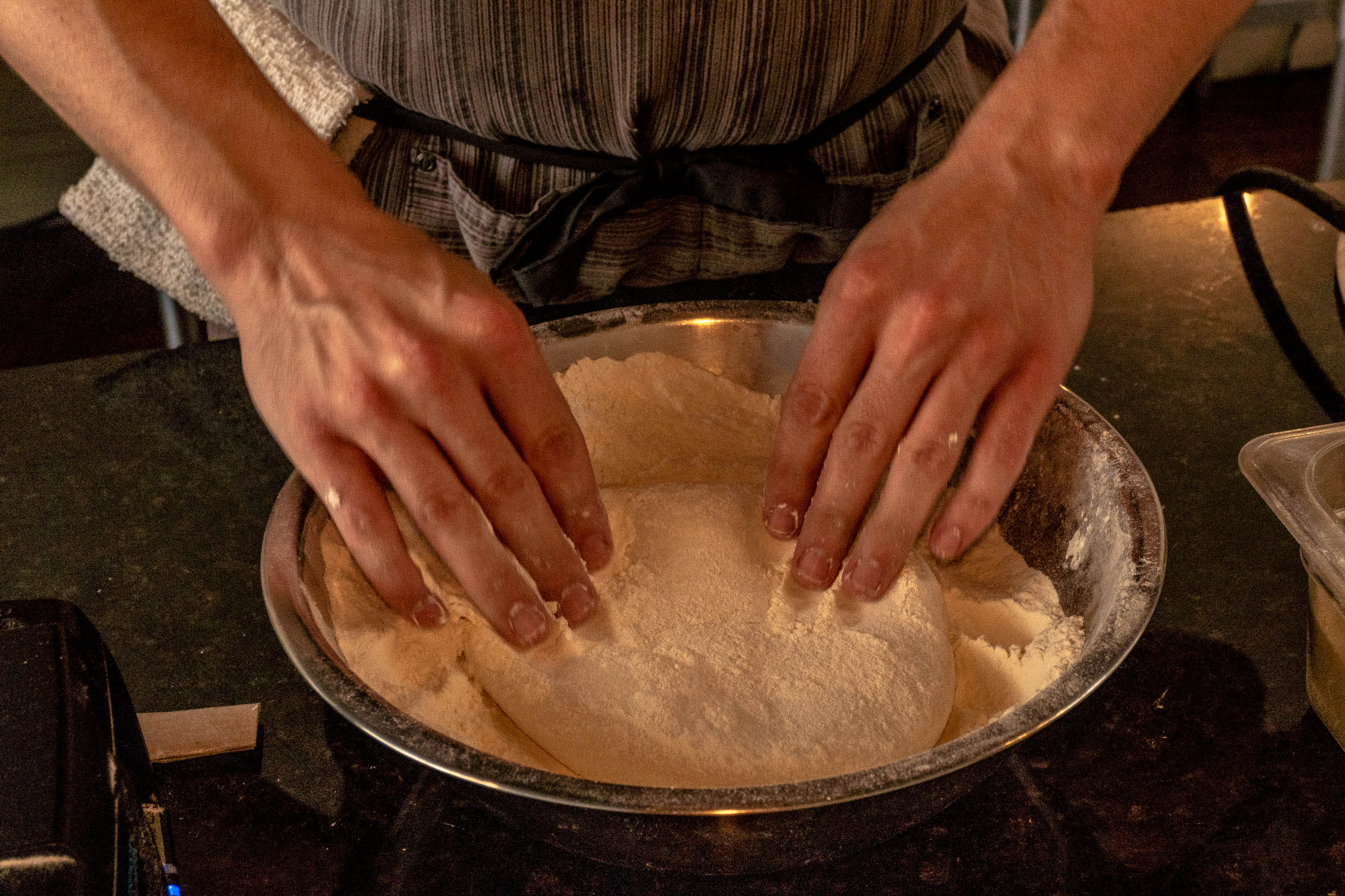
While most of the city’s top restaurants are located within or very close to the city limits, Pittsburgh’s prime pizza is everywhere, from North Side to neighboring counties.
I visited as many pizza joints as I could over the last couple of months to seek out the best we have. These are the 12 best pizzerias in Pittsburgh.
The best advice I can give is to place your order ahead of time, as most of these establishments make a specific quantity of dough for each day.
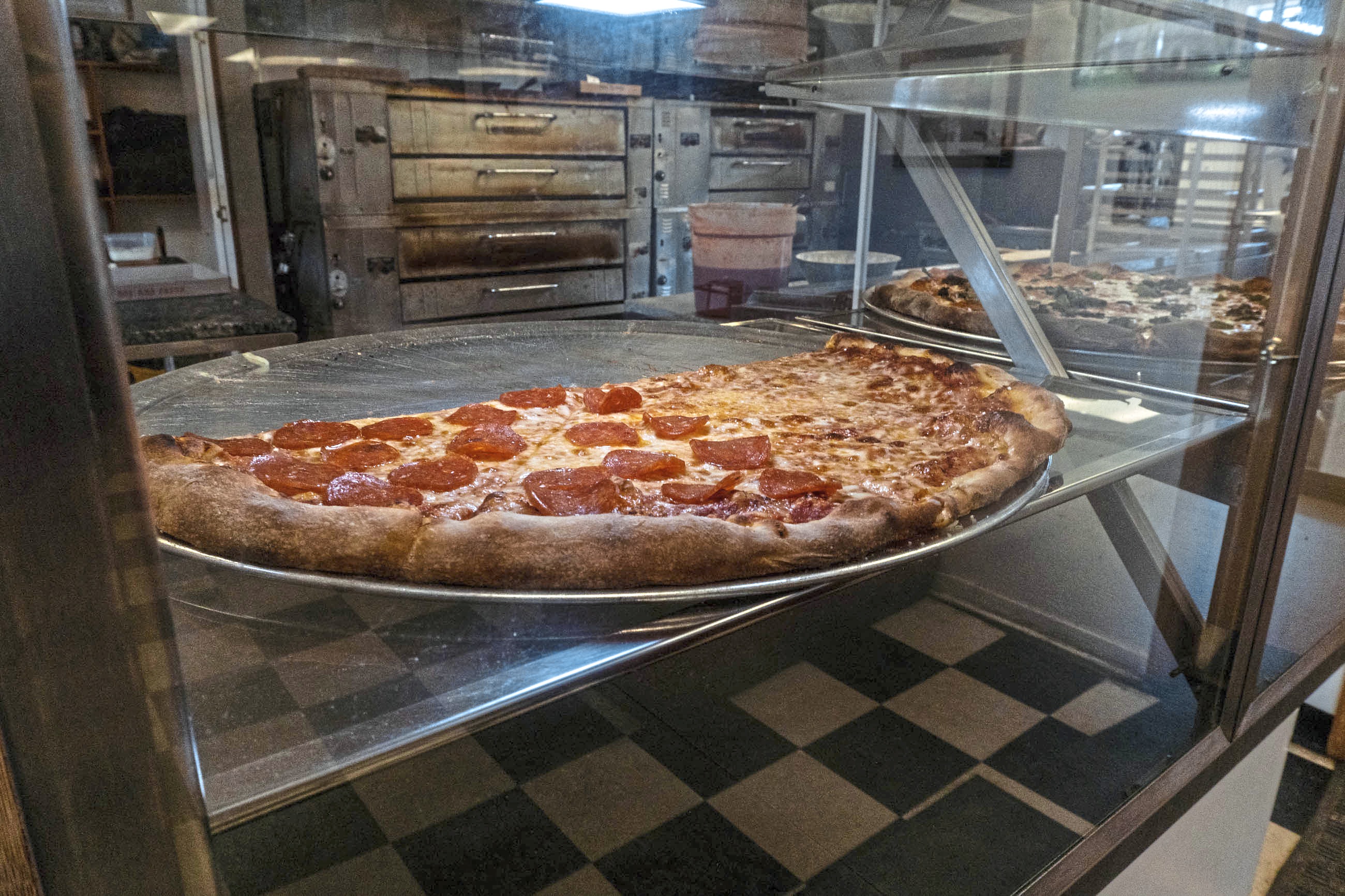
Josh Sickels became obsessed with New York-style pizza while touring as the drummer of rock bands such as The Takeover UK and 1,2,3. Off the road, the self-trained pizza maker started reading, chatting on message boards and practicing his craft. Sickels opened Rockaway Pizzeria in White Oak in 2017 and moved to a larger location in the building next door in 2020.
Sickels quickly earned acclaim for his 18-inch New York-style pies, which are better than you’ll find at most pizza shops in New York City. You get the gentle leathery tug as you bite into a crust cooked through and gently browned at the bottom. The edges aren’t overly puffy, which aligns with the style.
In a nod to the current fashion, Sickels’ dough is fermented longer and is a little bit crisper (and with less of a center flop) than the classic slice joints in Queens, but still has enough flexibility so that you can give it the good fold you want when you eat it. He uses a mix of the ultra-high gluten, unbleached, unbromated flour standard in New York pizzerias with King Arthur bread flour and a four-oil blend (olive, avocado, rice bran and grapeseed) to help him get there. His sauce, sweet California tomatoes blended with oregano, basil, garlic, olive oil and black pepper, adds the right amount of tang and pop. And the whole milk mozzarella melts to a perfect golden pooling.
The curious pizzaiolo now has his sights set on square pies, specialty builds and custom sauce blends. Those explorations on their own, which include Sickels’ homage to New Haven, Conn., style with white clam pies, plus cacio e pepe square pies with cream sauce and fresh cracked black pepper, and Italian-influenced mortadella pizzas with pistachio pesto, would merit Rockaway’s inclusion on this list as an all-around pizza destination.
But those New York pies, which blend the tradition of a classic slice joint such as Joe’s Pizza with that of a modern-day pizza icon like Scarr’s Pizza, are worthy of the highest acclaim.
1949 Lincoln Way, White Oak; rockawaypizzeria.com

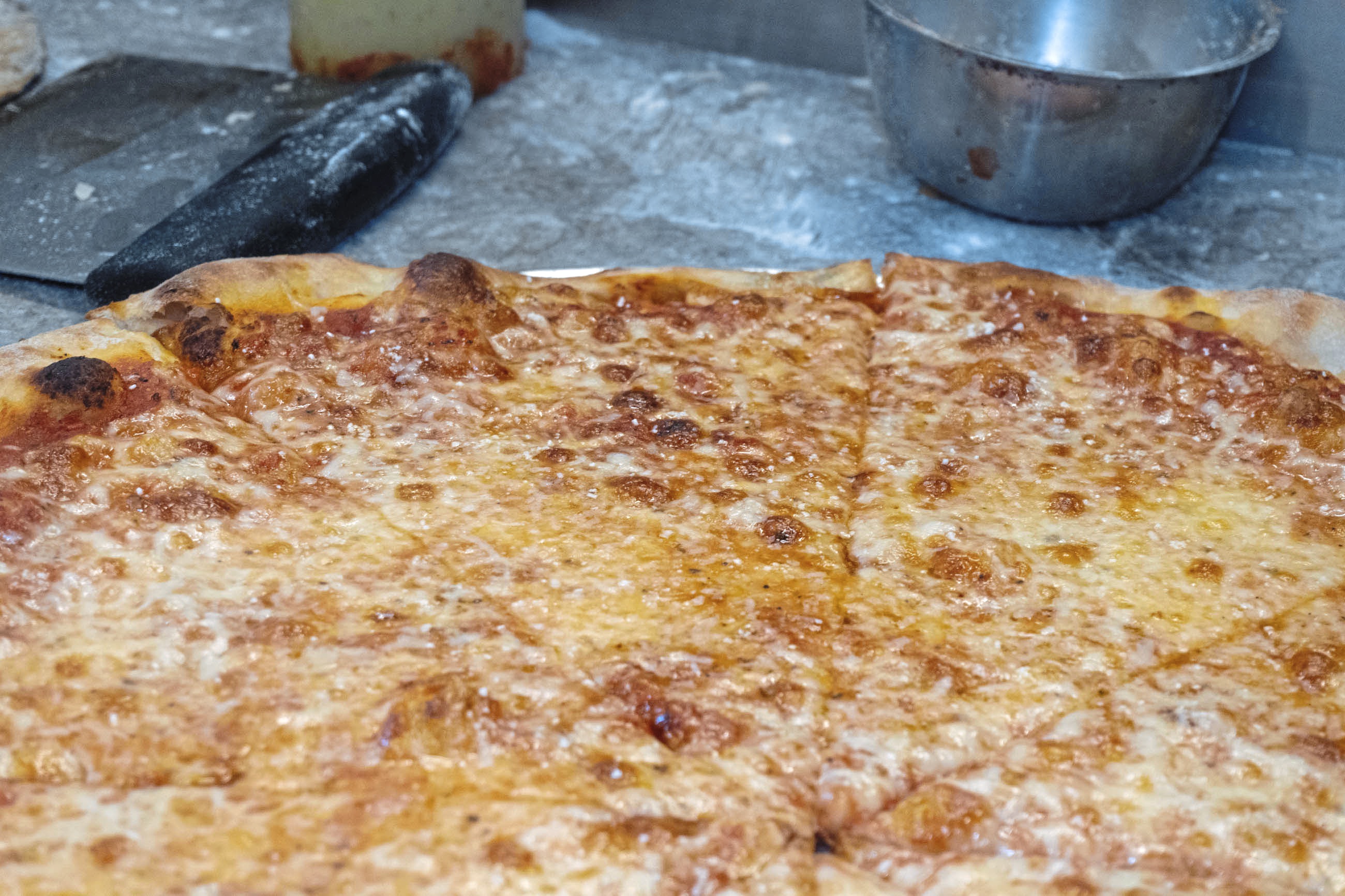
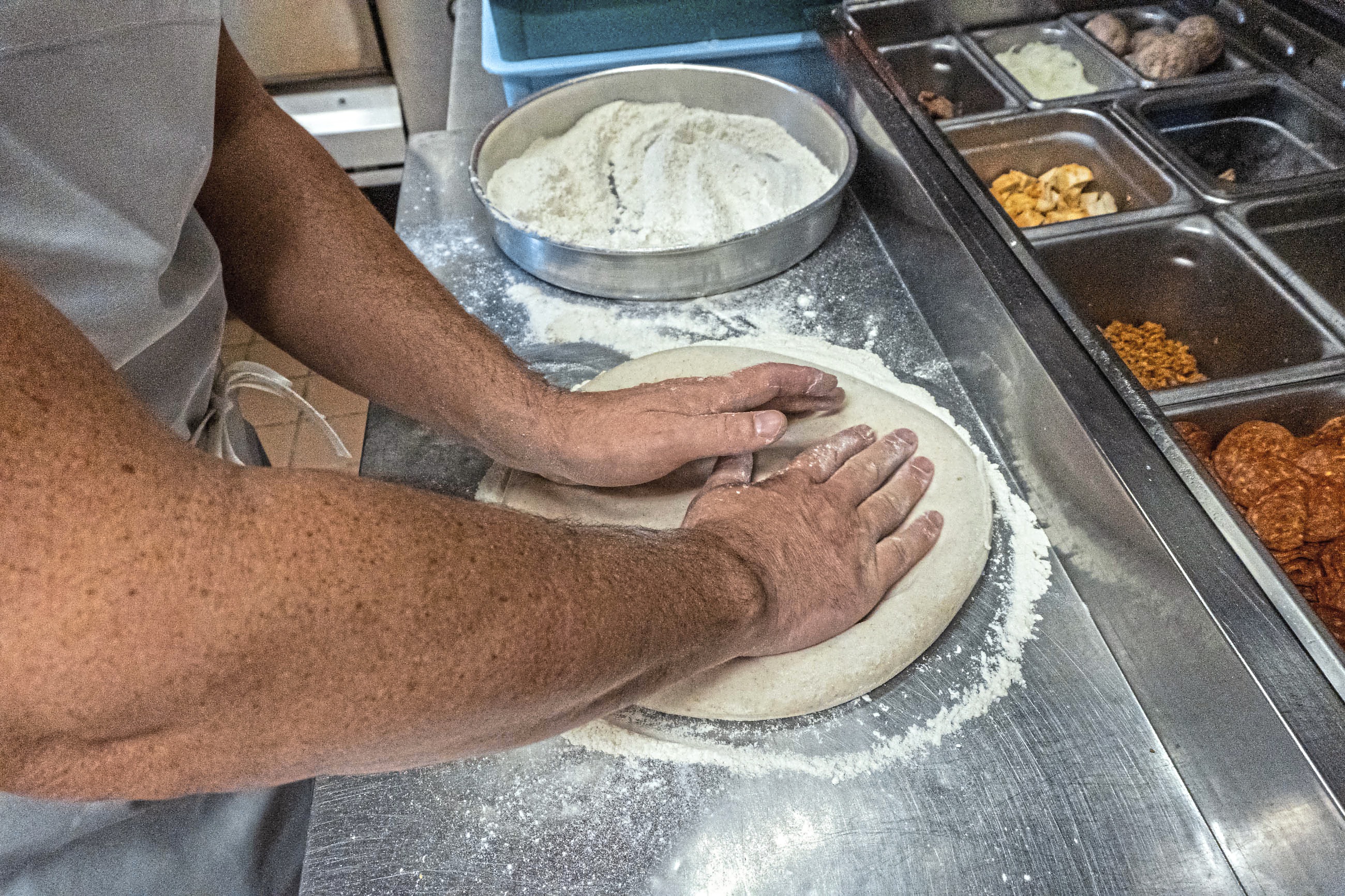
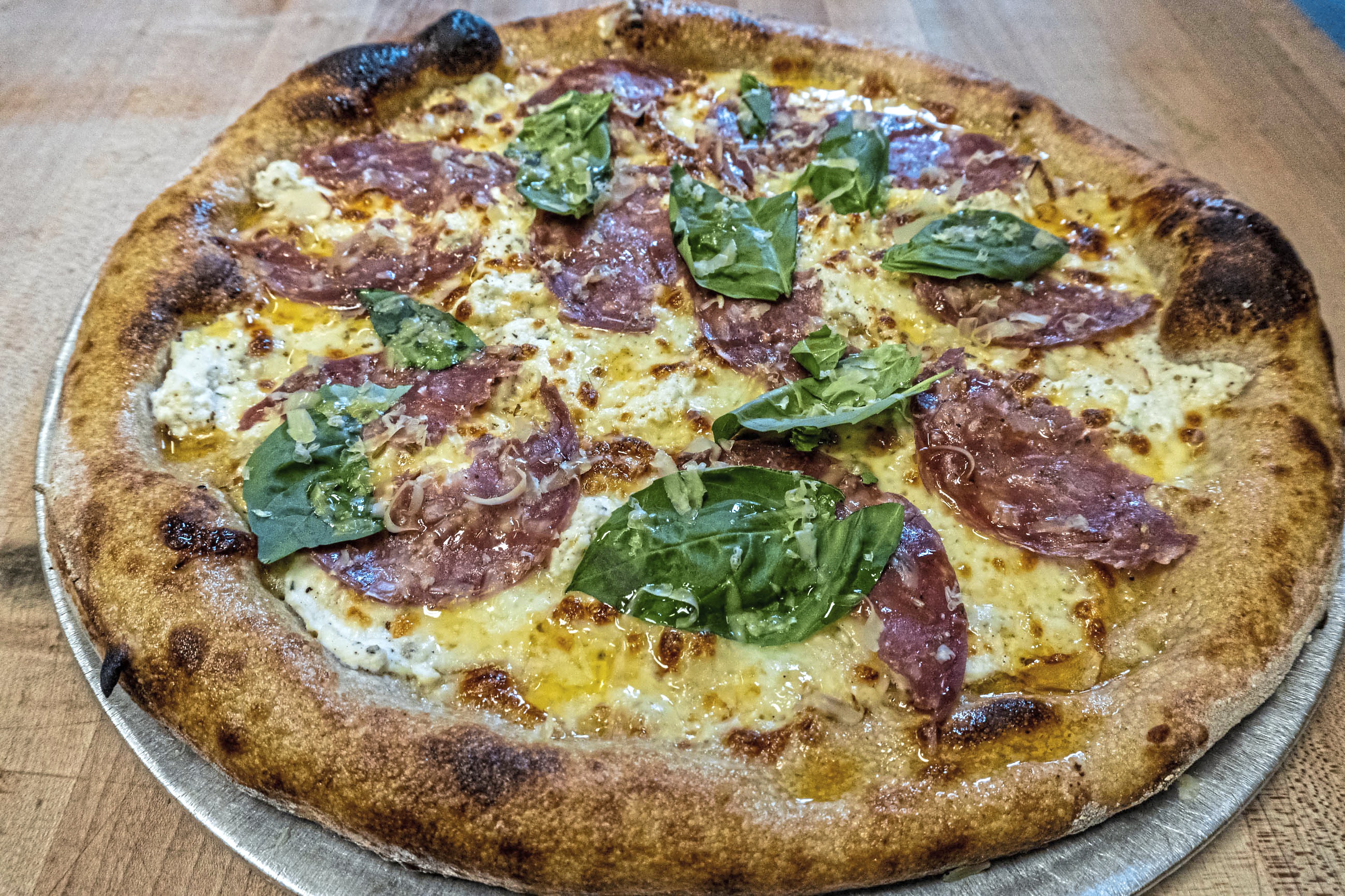

Owner/pizzaiolo Neil Blazin opened Driftwood Oven with then-partner Justin Vetter in 2019. The duo previously ran a mobile wood-fired pizza cart with the same name, but at the Lawrenceville eatery Blazin bakes the pizzas in a brick-lined gas oven.
Most gas-oven pizza doughs are made with commercial yeast and 100% white flour, and have a hydration in the low to mid-60s. Driftwood takes a different spin on its dough, using a sourdough starter, and nearly 40% whole grain and 70% hydration. Head baker Alaina Phillips and her team mix and prepare the dough, which is fermented for 24-48 hours, depending on factors such as outside temperature and humidity. They’re stretched into 16-inch round pies, one of two styles offered at the restaurant, and baked for 7-9 minutes (depending on topping build) at 600 degrees.
Even though this is very much a baker’s style pizza, if you go with classic toppings, this would still delight a New York pizza lover. You’ll get a thin pizza — but not paper-thin — in the center, giving way to a slightly more substantial outer crust. You can fold it just like a New York pie.
But do branch out to other builds, as Driftwood works with high-quality ingredients for its bespoke pies (with prices that reflect the cost of those components and the labor that goes into making them), such as the Major Tom (finocchiona, morita chili oil, herbed ricotta, mozzarella, provolone, fresh garlic, white wine shallot cream sauce). After a two-year hiatus, monthly specialty pies — many of which reflect what local farmers are growing at any given moment — are back too, and those are almost always worth ordering.
Don’t throw away those edges; they’re crispy and delicious, and here’s where you really get the tang of the sourdough and the toastiness of the whole wheat. These characteristics aren’t overwhelming in the central part of the pizza, where they add pleasant extra notes deep in the background.
Driftwood’s Roman-style square pizzas are crackling and crisp yet very airy because of their super-high hydration. (They use the same dough to make focaccia.) They’re a nice change of pace, especially as you can get them by the cut. (Go for a staff pick if you want to see what the culinary team is testing.)
3615 Butler St., Lawrenceville; driftwoodoven.com
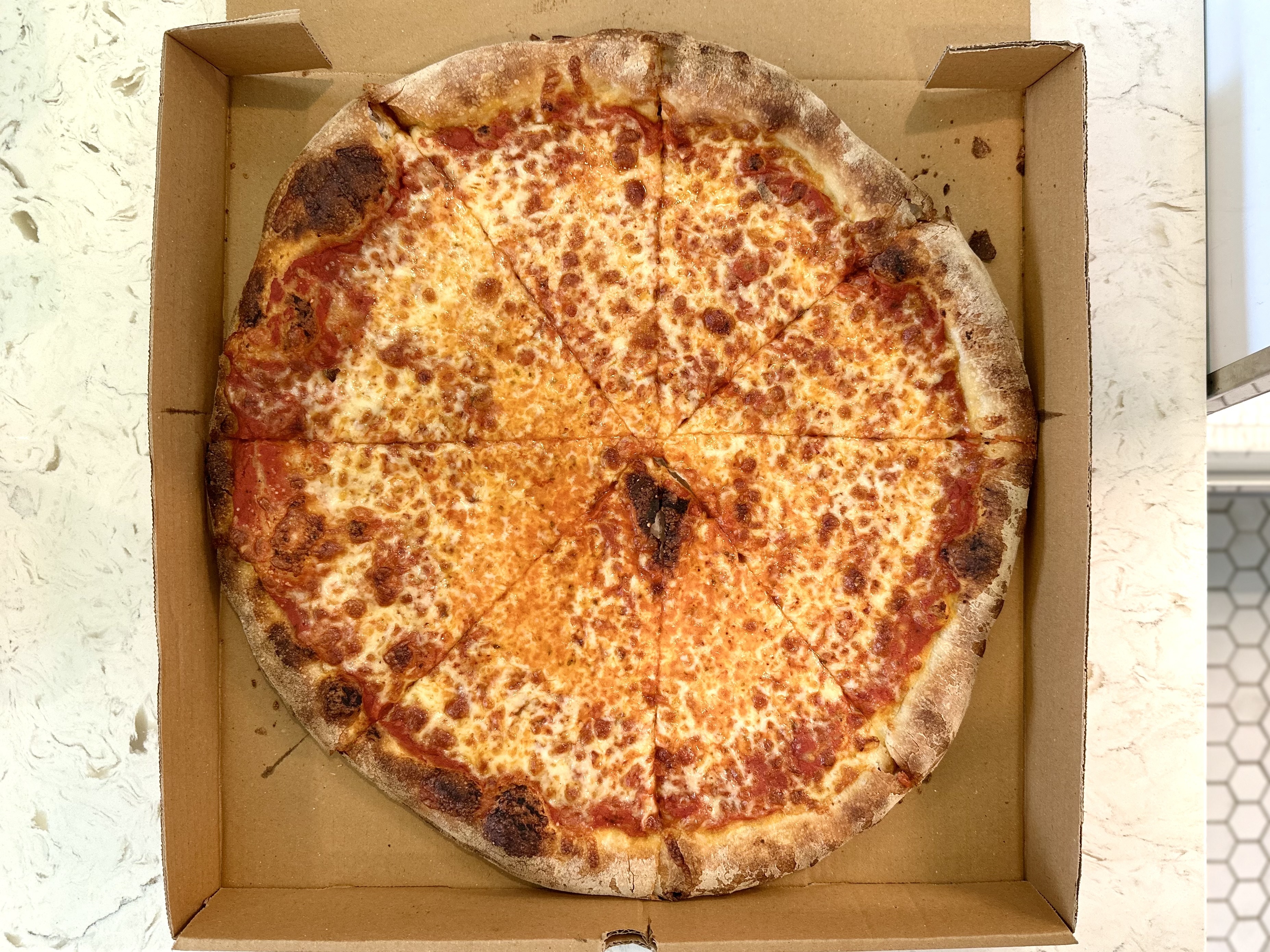
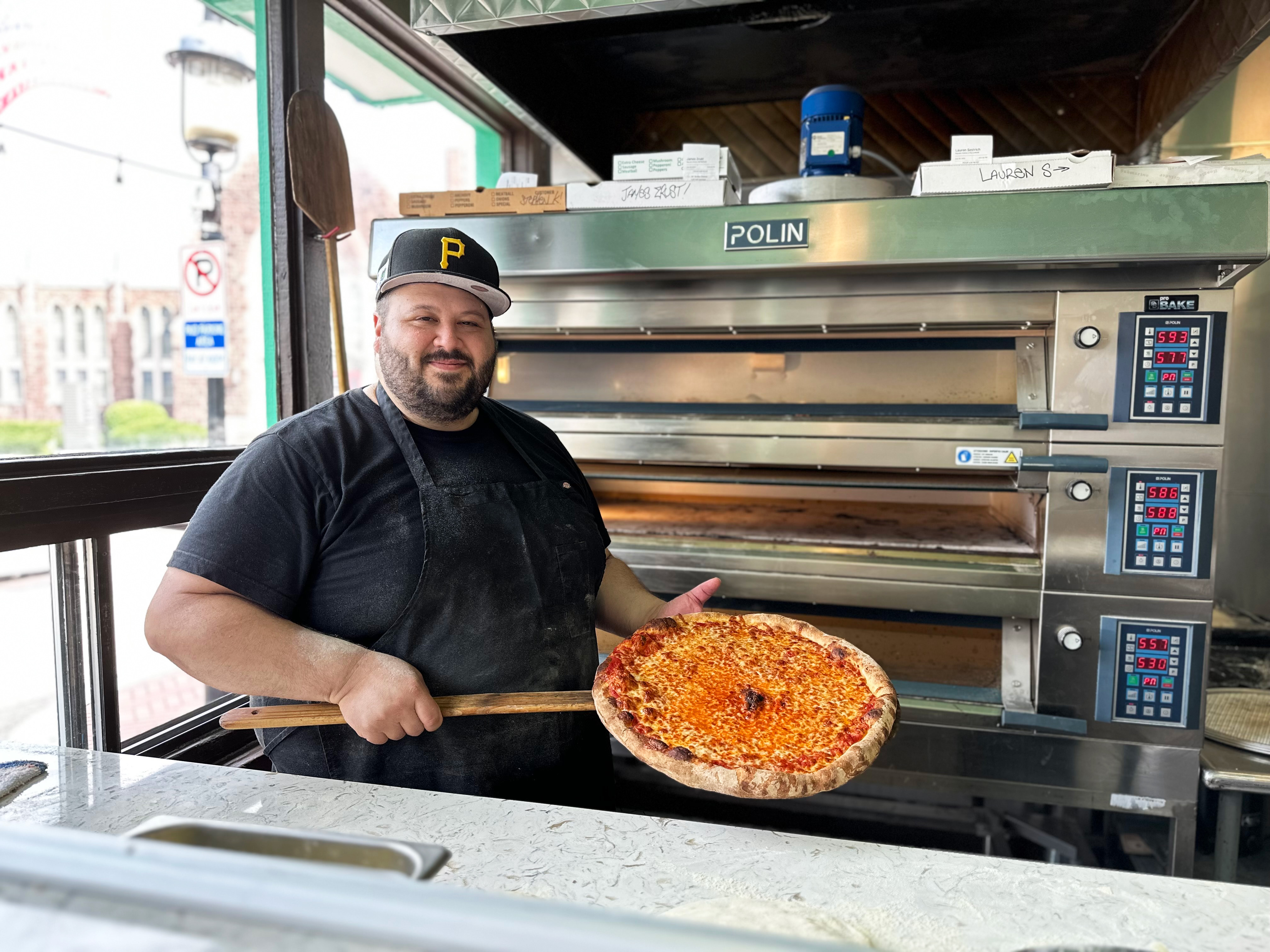
Badamo’s serves a Sicilian square pie that’s inspired by the prototypical mid-Atlantic pizza shop traditions of southern New York, coastal New Jersey and eastern Pennsylvania. There are influences of the thinner Grandma-style here, too, which explains why owner Anthony Badamo’s crust is only about an inch thick. It’s very crispy-crunchy, with a bubbling bottom that is deeply browned in most spots, a little less baked in others, and even some strands that move nearly to the burning point (but stay well on the yummy side of that).
Badamo made pizza in high school and returned to the trade when he left a corporate job at 27 to open Badamo’s (then known as Apizza Badamo) in Mt. Lebanon. He opened a second location on the North Side in late 2017.
In 2023, Badamo closed his Mt. Lebanon location, opening a new spot nearby on Potomac Ave. in Dormont. Armed with a Polin three-deck electric oven and a refreshed focus, he and his team are operating with added enthusiasm. They’re playing around a bit with flours blends, which, combined with that new oven, has Badamo’s putting out pies with a bit more bounce and crispness.
Sauce is a dominant component of the Sicilian, with zesty rivers of it spooned over a layer of Badamo’s four-cheese blend (pecorino, domestic Parmesan, aged provolone and whole milk mozzarella). The bottom layer of cheese extends to the crust’s edges, allowing for a bit of extra-melty cheese umami and even a little frico-ing right at the end. Sometimes, there’s a sprinkle of room-temperature cheese on top, too, a little homage to the Ohio Valley style. An optional touch of fresh basil adds an herbaceous pop and you should ask for it.
This is textbook can’t-stop-eating-it-even-if-you-want-to pizza. It's a good thing that it’s just $3 for a cut because, even though one will fill you up, you very likely may go back for a second round. Then again, you could also get a slice of Badamo’s terrific New York style (whole pies are available), which would earn a spot on this list even if the Sicilian wasn’t offered. Those come from 20-inch rounds that are classic; with a thin-ish, slightly leathery pull and just a little flop in the center, they’d be right at home in New York City.
Both locations feature a casual atmosphere where you can get pizza by the pie and by the slice.
1106 Federal St., North Side, and 1509 Potomac Ave., Dormont; badamospizza.com


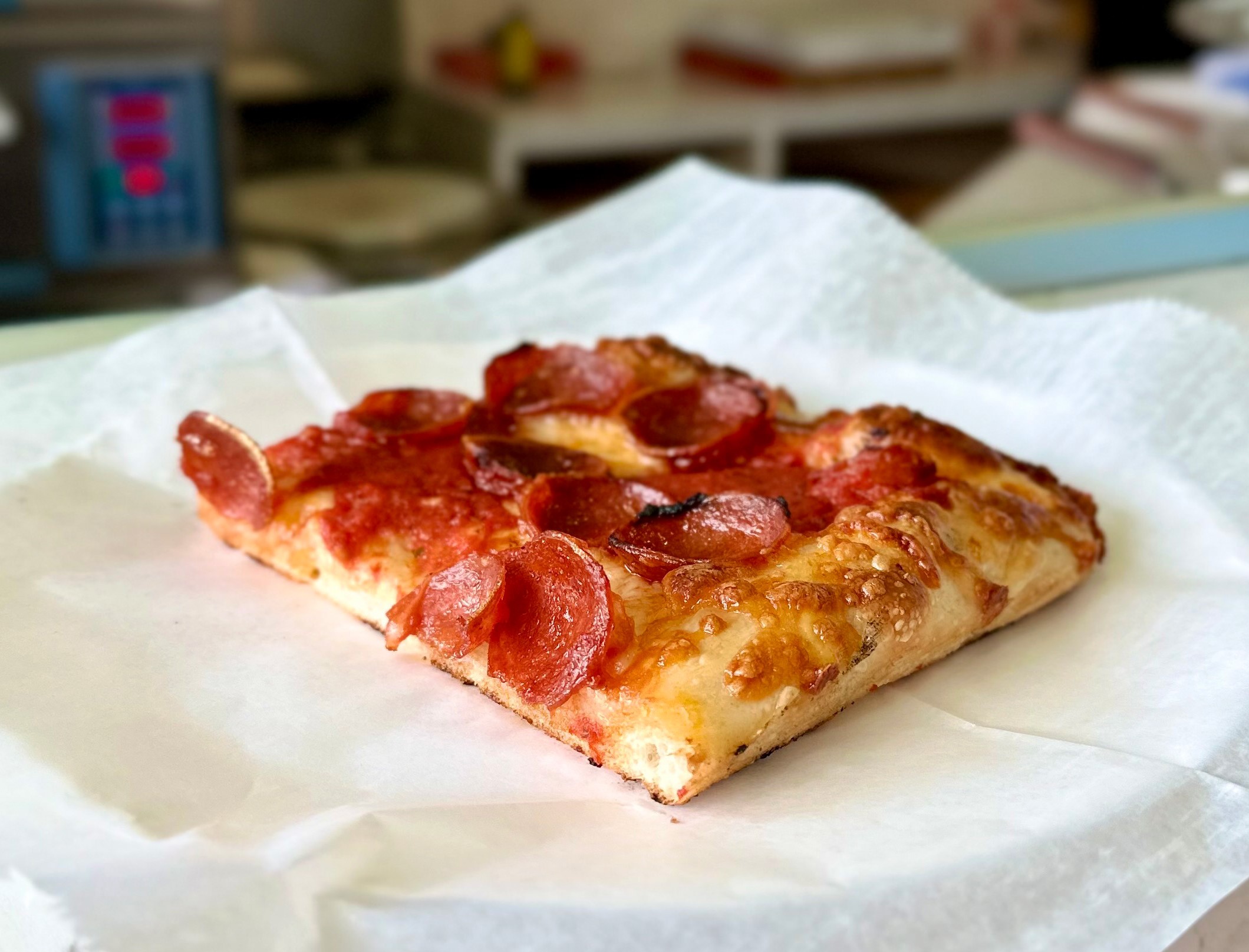
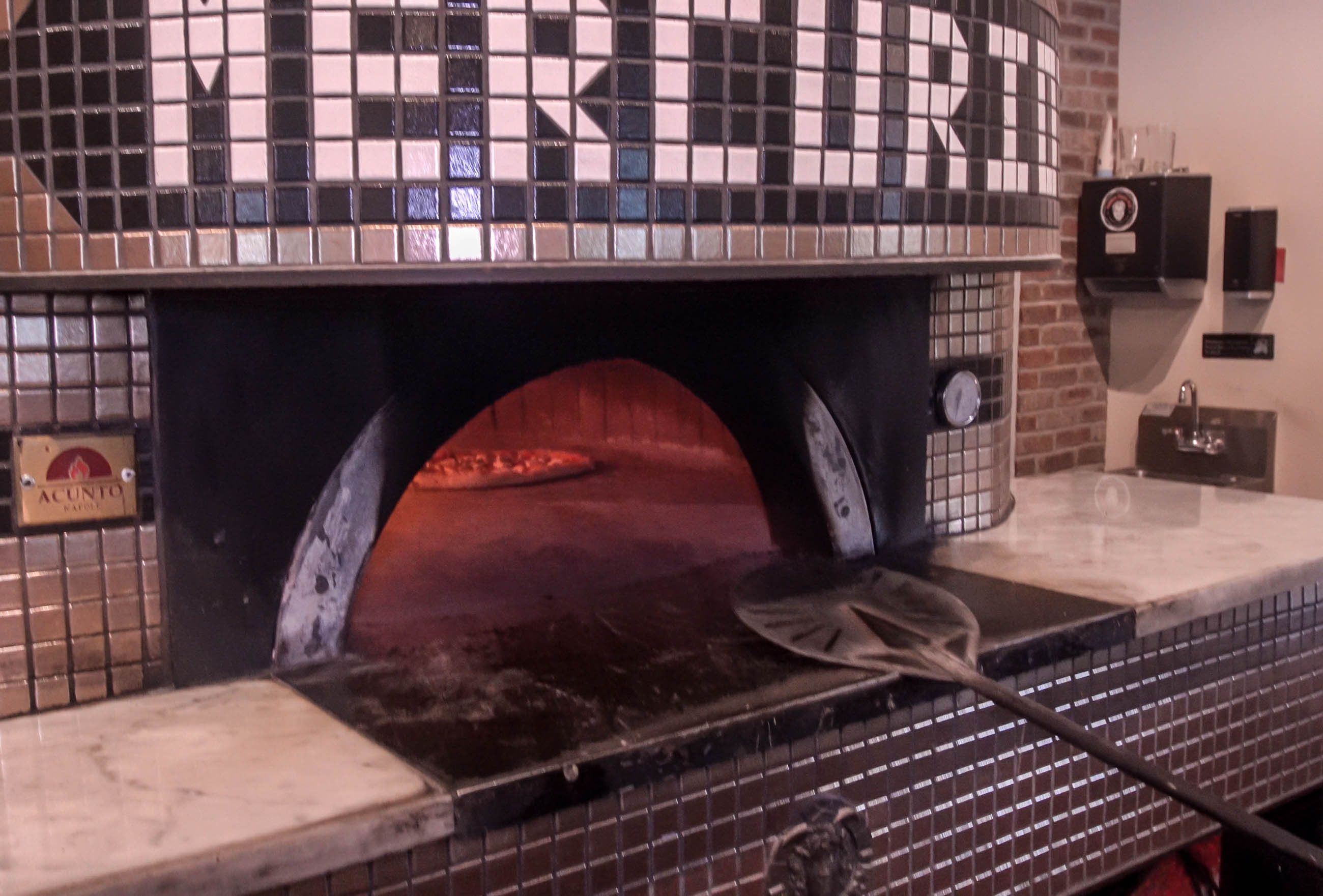
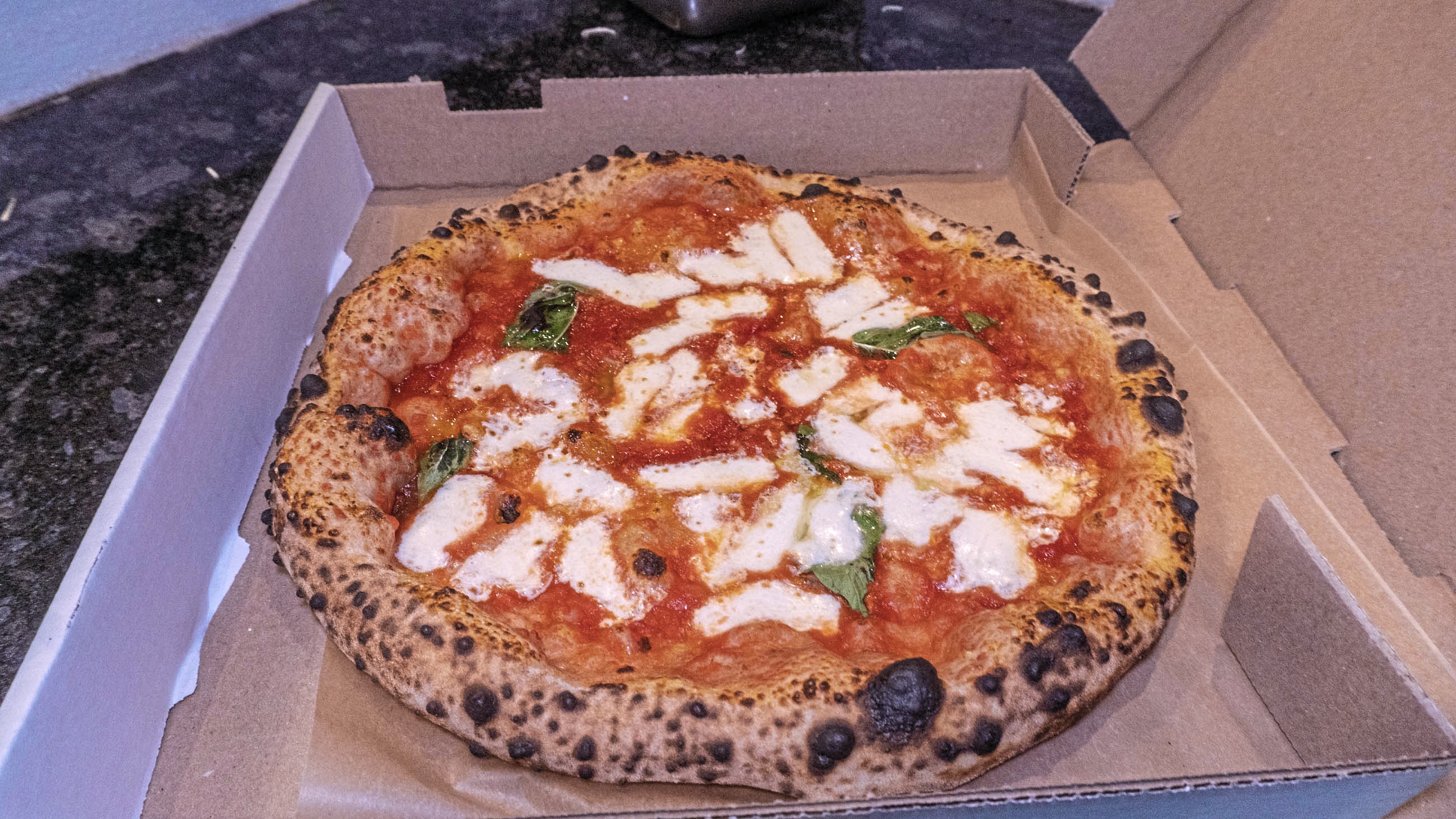

The 12-inch pies hit all the right notes for what you’d expect from this wood-fired pizza style. The 36-hour fermented dough bakes in 90 seconds to a puffy, chewy rind, a center with a soft tug, a deeply leopard-spotted undercarriage and a whisper of fermented tang. Topped with piquant hand-crushed tomatoes, creamy house-pulled mozzarella and fragrant basil, Mercurio’s pizzas are decidedly transportive.
Linda and Rick Mercurio opened Mercurio’s as a gelateria in Shadyside above Girasole in 2005. (They previously operated Mulberry Street Creamery in Kittanning in 1999.) In 2011, they moved it to its current Walnut Street location, which is where two of their children, Anna Crucitt and Michael Mercurio, added the pizza component in 2012. Their brother, Joe Mercurio, joined them as a partner in 2013 and the three took over the whole operation in 2016.
Michael went to New York City in 2010 to study with Roberto Caporuscio, the famed pizzaiolo who prepared Neapolitan pies in Pittsburgh from 1999 until 2006. In 2019, Michael and Joe deepened their training with a master class from Associazione Pizzaiuoli Napoletani. But much of the ongoing learning is from experimenting in-house, playing with fermentation methods, water temperature and timing.
There’s a lot of hemming and hawing about what technically is allowed to be called a Neapolitan pie. Mercurio’s Neapolitan pies largely adhere to the spirit of the tradition and start at around $12. Considering the quality of ingredients, that’s a great deal, especially because it’s only a couple of bucks more than when the Post-Gazette visited its Walnut Street location in 2012. (Mercurio’s has an outpost in O’Hara, which opened in 2019.)
You’re meant to eat this style of pizza with a knife and fork, and that’s just how you should approach the bites at the saucy center of the ultra-thin crust. Holding this pizza is a messy endeavor even if the pie is lightly topped. But don’t finish this way. Instead, please pick up the airy, lightly charred crust and run it through the gooey leftover drippings. Keep the toppings simple: This is a pizza where balance, quality ingredients and technique are meant to shine.
5523 Walnut St., Shadyside, and 1335 Freeport Road #2, O’Hara; mercuriosgelatopizza.com
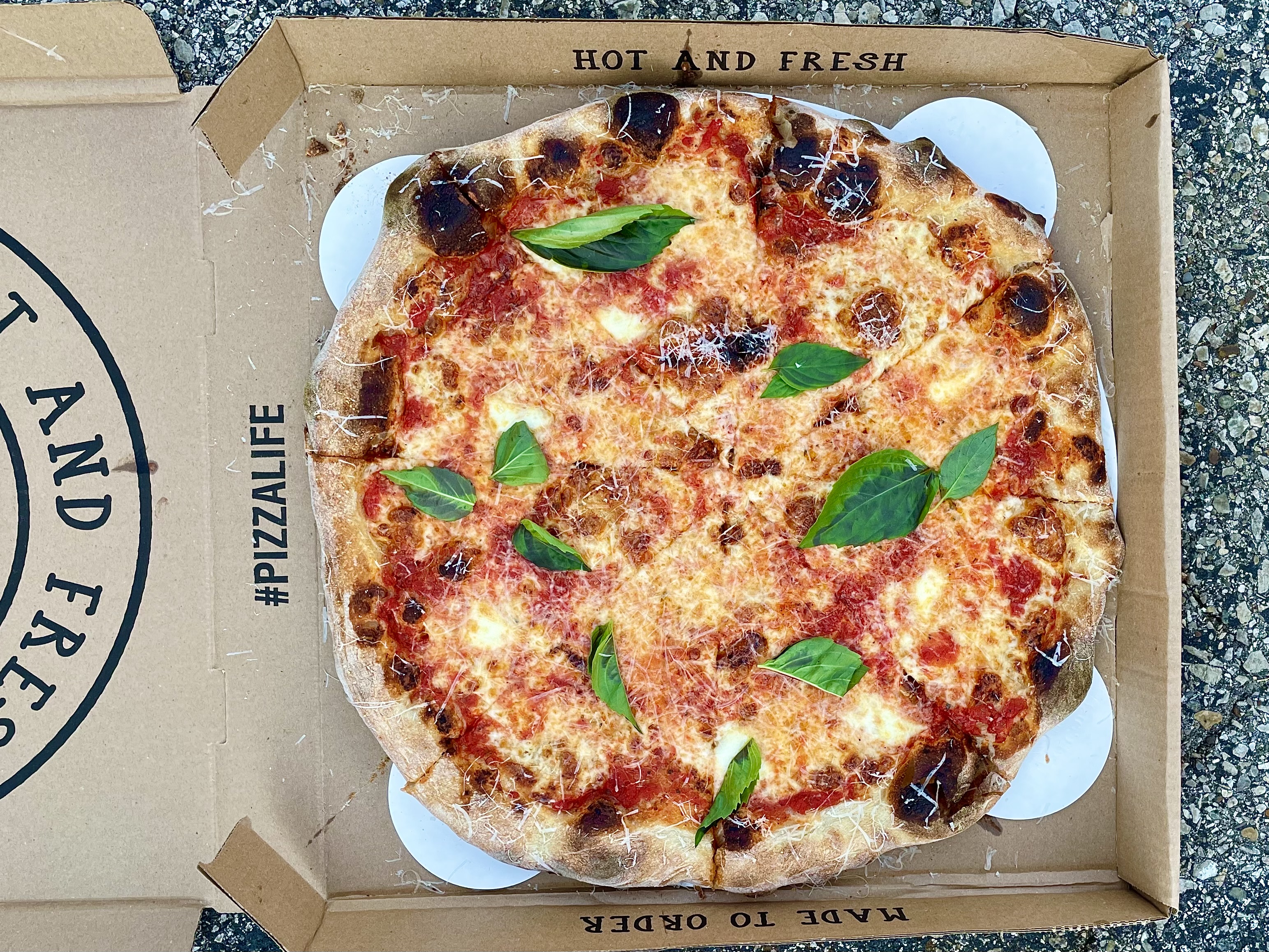
The 16-inch pies (a 12-inch version is also available) at Pizza Lupo are an outstanding example of the en vogue wave of kind-of-old-school, kind-of-modern pizza shops. The cheese is bubbly and melted all the way through but not overcooked, with little pockets of house-pulled mozzarella in addition to the hand-grated cheese, all perfumed with a flourish of fresh basil. The edges are a puffy, eggshell cornicione, and the undercarriage is crispy and burnished brown. The sauce, of raw California tomatoes, garlic, salt and olive oil, plays an essential supporting role. Toppings, which are of good quality, are canonical — think pepperoni, house-made meatballs, banana peppers and black olives — and a good number of specialty pies are available, too.
Pizza Lupo is owned and run by brothers Brad and Travis Wolf, both City of Pittsburgh firefighters. They started making pizza at home as a hobby to entertain friends and family, and, though they still work full time for the city, the tinkering never stopped. They were so into it that they opened Pizza Lupo in an old Lawrenceville bakery in December 2020. They pay attention to the little details at every step and aim to make it accessible to most people with a mid-tier price point.
The brothers closed their shop for a few months last year to upgrade the space. The most significant change was a PizzaMaster, the game-changing electric oven that allows for precision temperature control. The Wolfs use a mix of flour with a blend that changes depending on weather conditions and incorporates some sourdough starter in the dough, which typically ferments for 48 hours. It has a higher hydration (74%-76%) than most pies in this style, which gives it that puffy crust and a good amount of char on the edges. They cook it at 650 degrees and then, if necessary, finish the pizza in the lower rack of the oven, where they also cook their terrific grandma-style tray pies (a limited number are offered each day) at 540 degrees. Those tray pies, by the way, are also quite good, as is the fried calzone.
A Pizza Lupo pie holds up better on the counter than any pizza on this list (except maybe Rockaway). Two hours later, it maintains some of the crispiness it had fresh out of the oven but has a little leathery pull. The crust stays crackly but has a little bit of a pleasant tug. You can tell it’s a good cheese mix because, as it settles, it melds with the sauce, forming a lovely, denser bite. (We love room temperature cheese, right?)
5123 Butler St., Lawrenceville; pizzalupopittsburgh.com

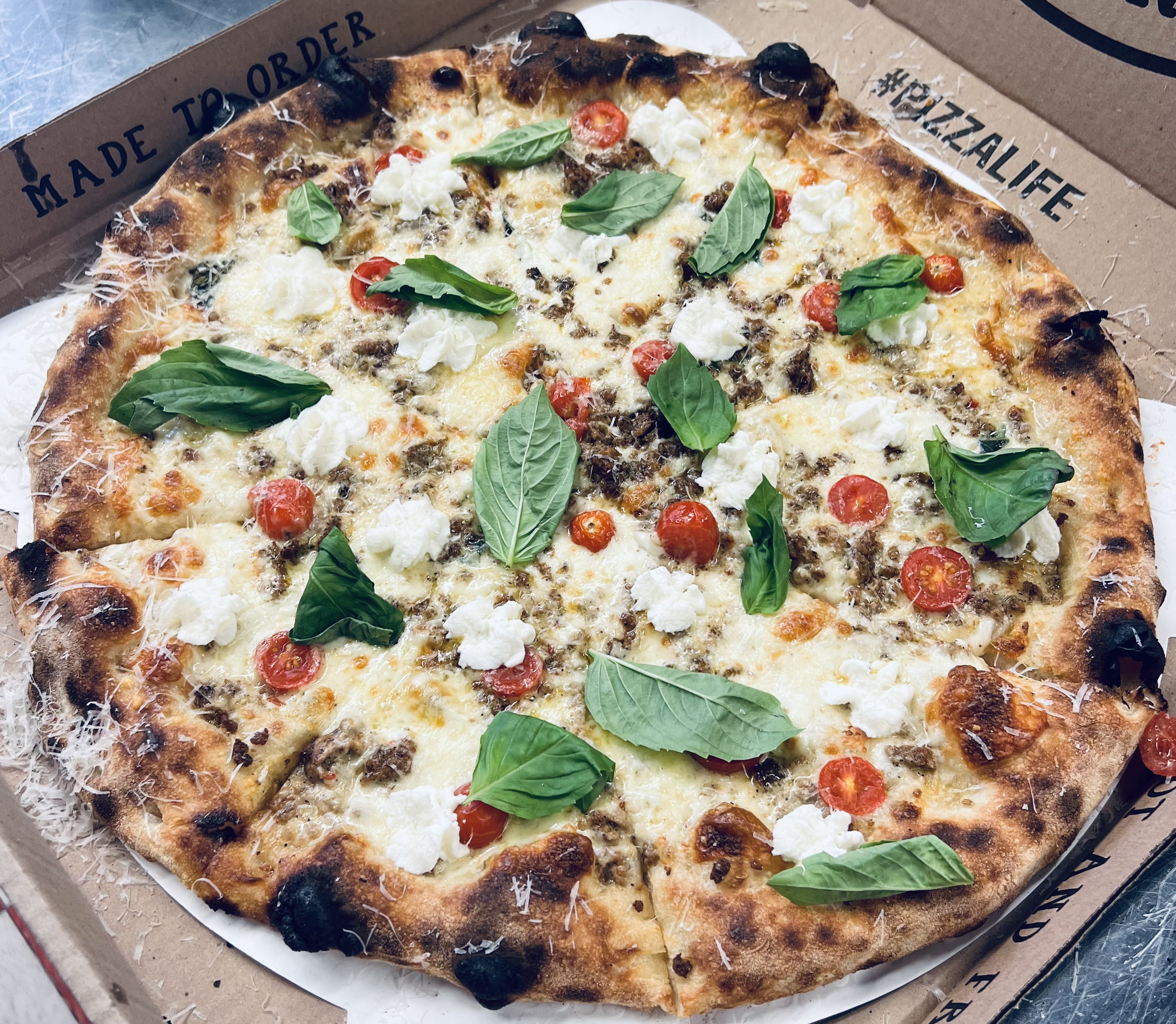
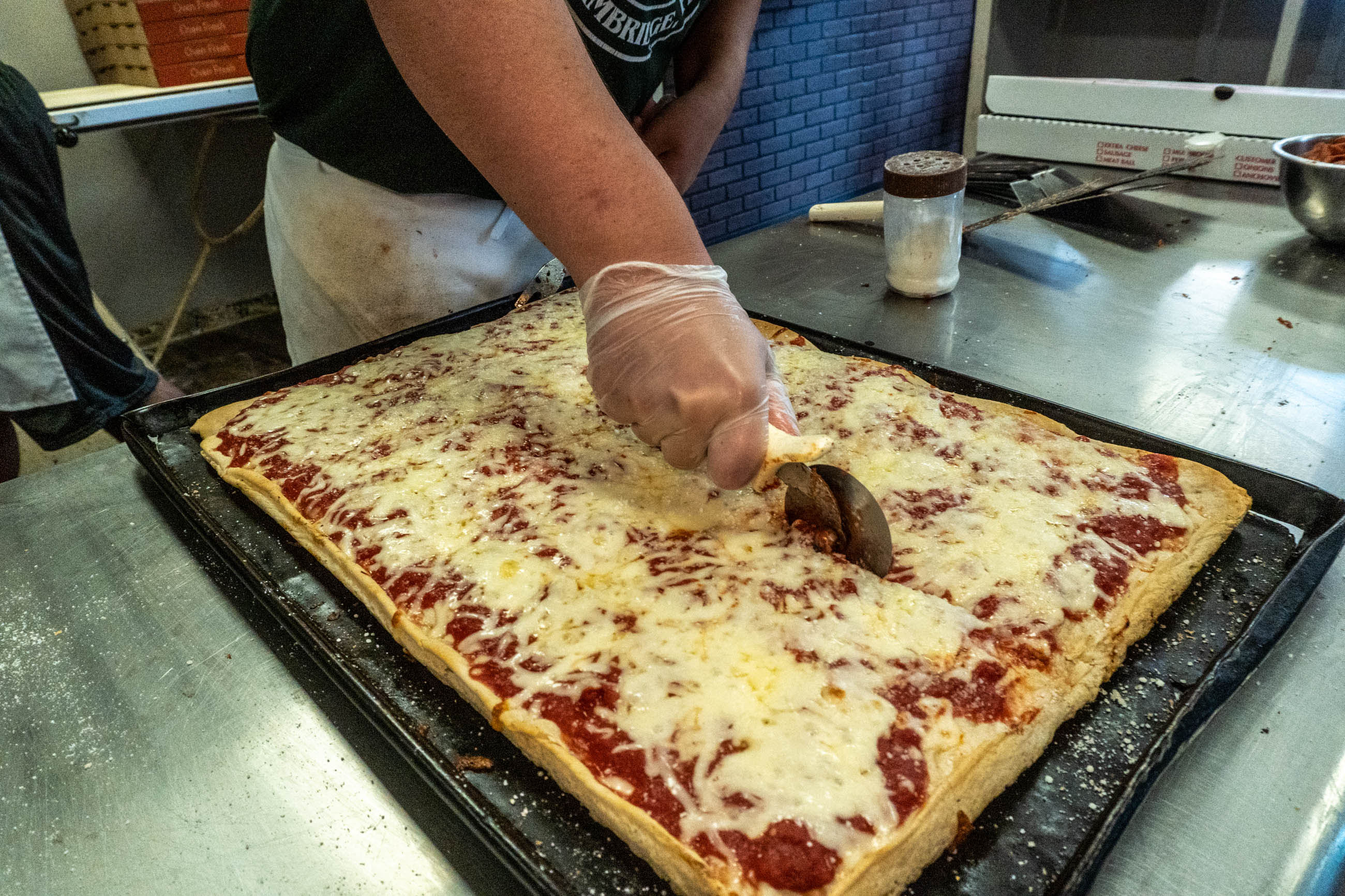
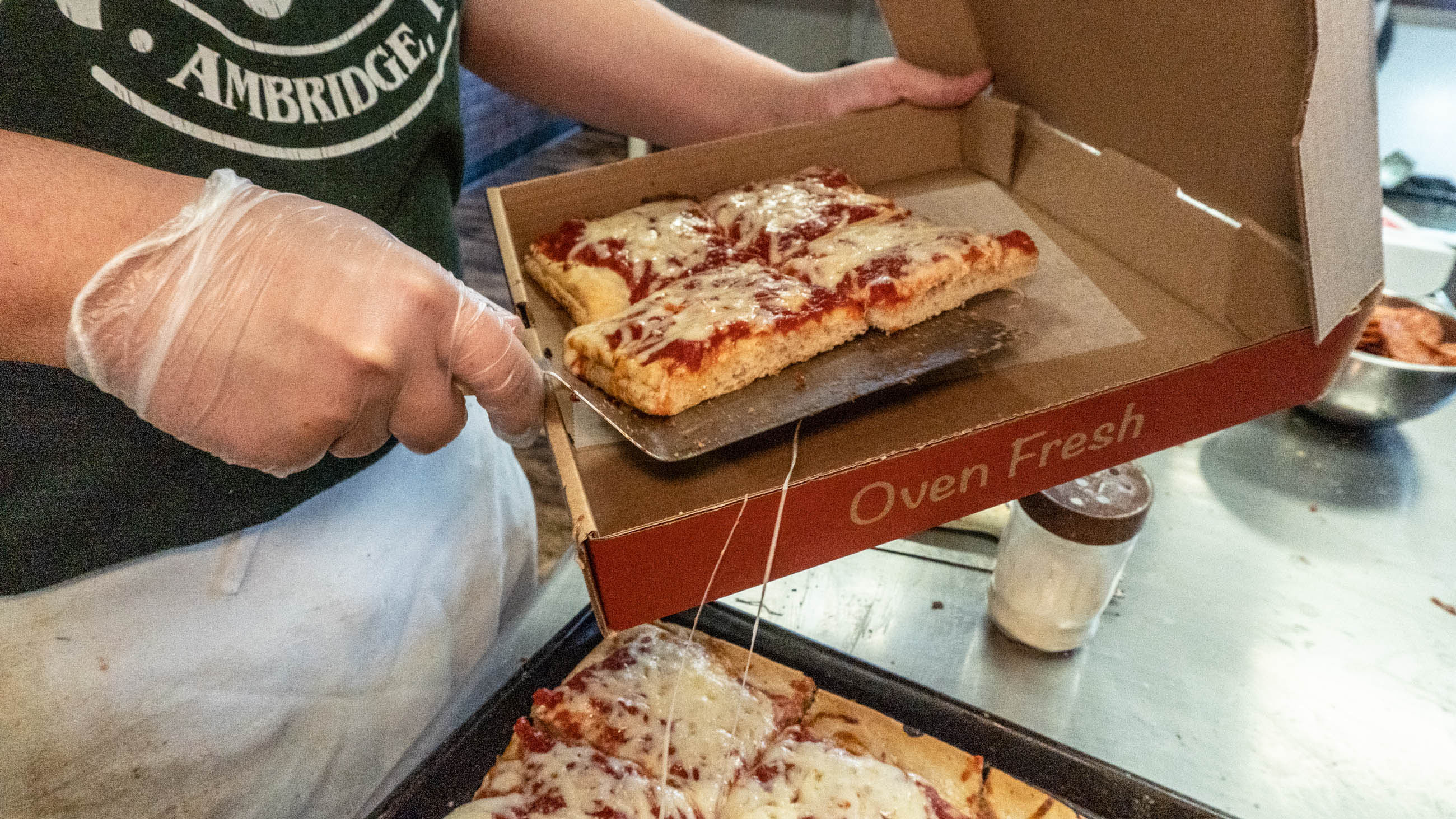

Pizza House, widely known as Police Station Pizza due to its location next to the former Ambridge police station, is a lesson in not judging a book by its cover: The rectangular pie, served by the cut, can be more than 2 inches thick in the center and, with its blend of cooked and room-temperature cheese, looks like pizza you might find at a school cafeteria or the sad section of the freezer case. However, most of those who mock it as “looks like a Lunchable” haven’t tried it. When made correctly, Ohio Valley style pizza ranks among the most satisfying styles around, and nobody does it better.
Bite into it and its crackly bottom crust gives way (with an almost comical CRUNCH) to toasty dough-air, mildly acidic sauce and strings of just-melted cheese. The edges are like eating the “can’t stop eating these, my subconscious is making me do it” breadsticks that used to come standard at classic red-sauce restaurants.
The pizzeria opened in 1951 and offers its own spin on Ohio Valley style. The dough is double-proofed and par-baked every day in 24-by-16-inch pans. More than 2 inches in some places, it’s quite a bit thicker than the original version served at the still-excellent DiCarlo’s. In another departure from the style, there’s a handful of triple-provolone blend baked into the pie with the sauce (a simple tomato sauce) for the second bake, with just a smattering of the hand-grated cheese blend, plus some Romano) added to the top prior to serving. Order your cuts at Pizza House with extra cheese if you want a more classic Ohio-Valley string-cheese texture. And do let it steam in the box for a minute or two before you eat it, to coax the melting process. (But don’t wait too long; this is pizza meant to be eaten fresh from the oven.)
Bill Cain worked at Pizza House for 20 years prior to purchasing the business in 2020 from Alex Burzese. He had run the place since 1984 when he took over from his father, Robert, who bought the business from Tony Dippolito in 1954. Through it all, everything has remained more or less as it was before. And, at $1.20 a cut as of press time, it’s one of the best deals around. Two pieces make a meal, especially if you have some vegetables on hand. And, it’s available as a whole tray. Two other quality examples of this style, D&G Pizza in Beaver Falls (with a second location in Monaca) and Breezy’s Pizza in Aliquippa, spun off from Pizza House decades ago.
1007 Merchant St., Ambridge
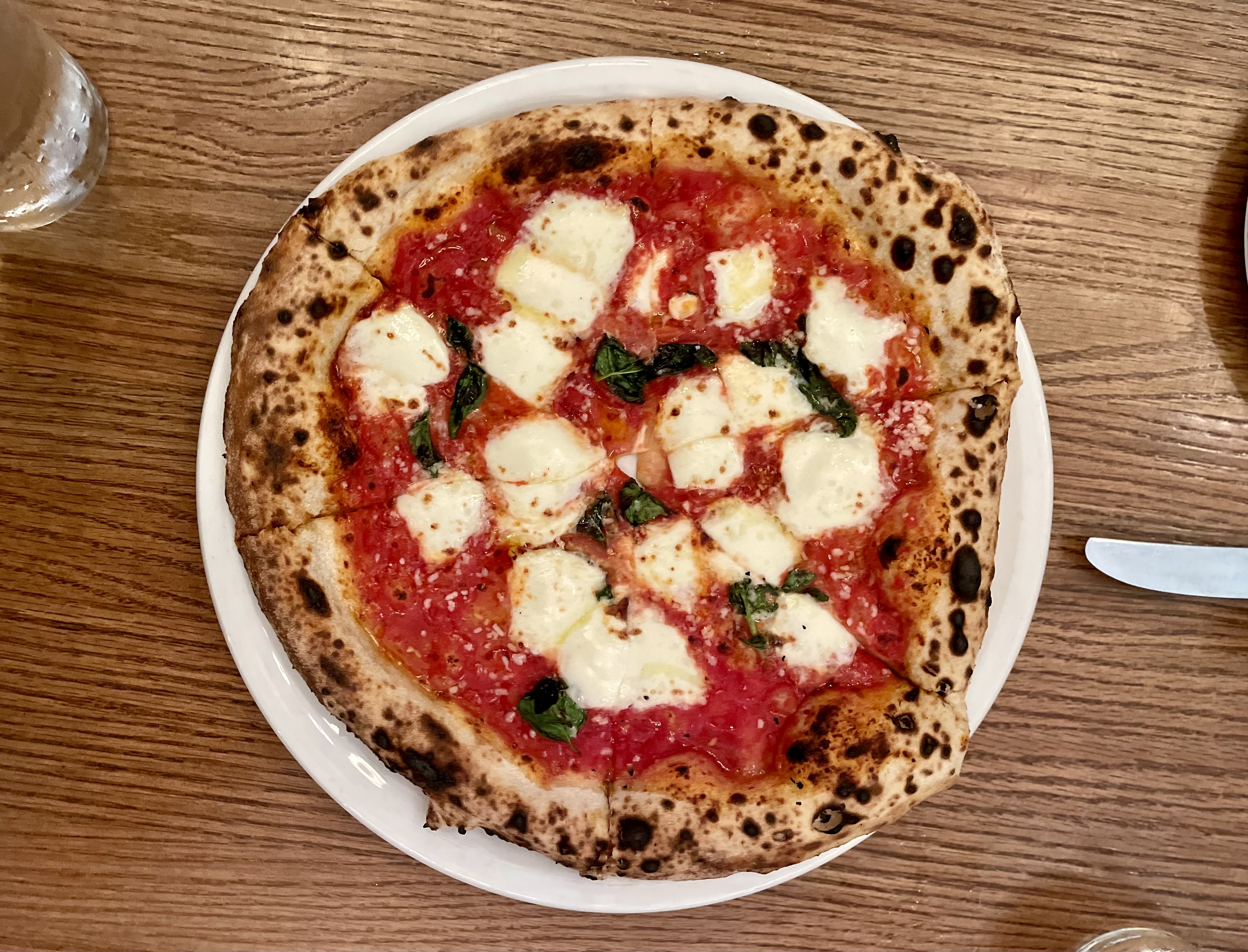
Eating a perfectly harmonic pizza is as evocative as a trip to the symphony. And that’s what’s happening at Della Terra Italian Bistro, the Zelienople restaurant that started nearby in a small town called … Harmony. Co-owner Fiore Moletz started making pizza there in 2013, and in 2014, one of his chefs, Rich Burns, jumped in to help.
The Della Terra oven is fueled by a fiery cauldron of blended local hardwoods that cook a 12-inch pizza in 90 seconds. The result? A pilowy, toasty aromatic crust with a little bit of sourness. Burns dresses the pizza with a bare-bones sauce of crushed Stanislaus Alta Cucina plum tomatoes and salt, a sprinkling of Grana Padano and Liuzzi mozzarella and basil, and finishes it with a dash of good olive oil and a sprinkle of more Grana Padano.
Burns says he really got into the craft of pizza after making sourdough bread for a regional Italian dinner at Della Terra in 2015 — a move that inspired him to incorporate a natural leavener into his pizza dough. Things took off from there. When the restaurant moved to its current location in Zelienople in 2019, he started playing with flour varieties and hydration levels (typically 70%, depending on the weather) to get the pizza to cook correctly in the restaurant’s Marra Forni oven.
The lower-than-typical hydration for the style and minimalist toppings mean that you can pick this one up when you eat it, as opposed to pizzas that fall strictly in the Neapolitan tradition.
You can, of course, get other toppings (and Burns and Co. are mercifully restrained with them), but at Della Terra, you have an opportunity to eat pizza in its purest, most beautiful form. Why skip that?
100 N. Main St., Zelienople, dellaterrapgh.com
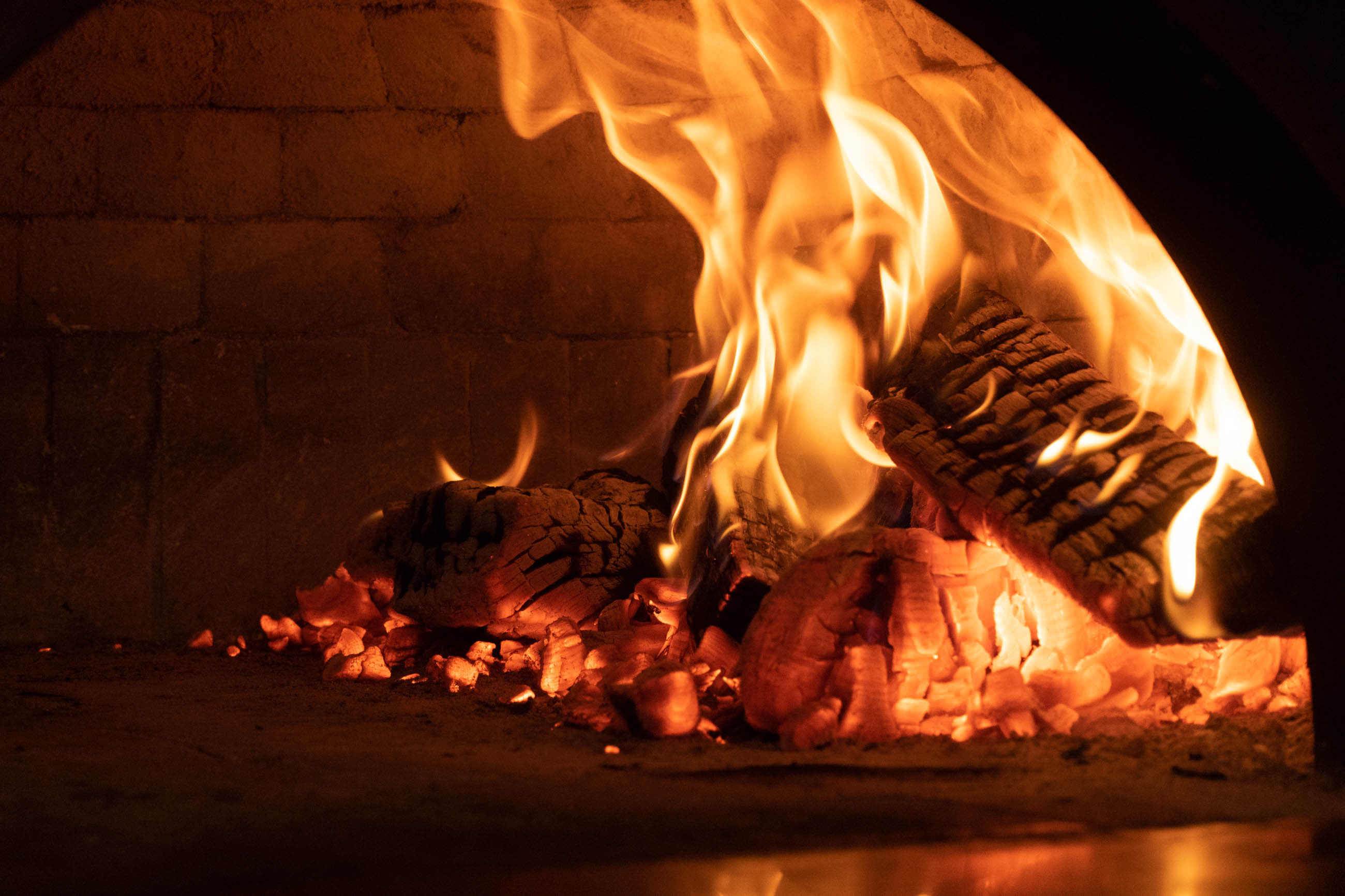

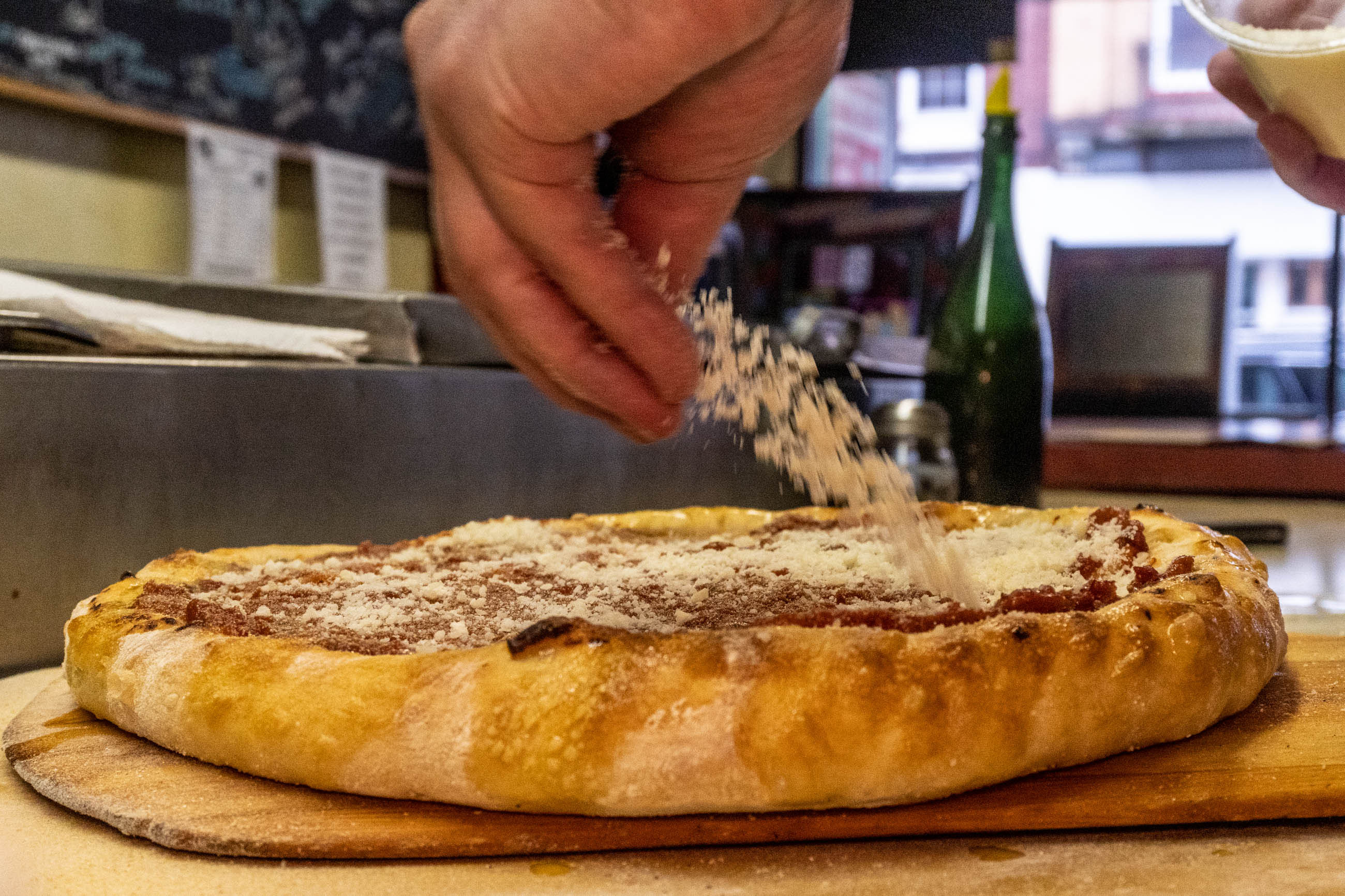
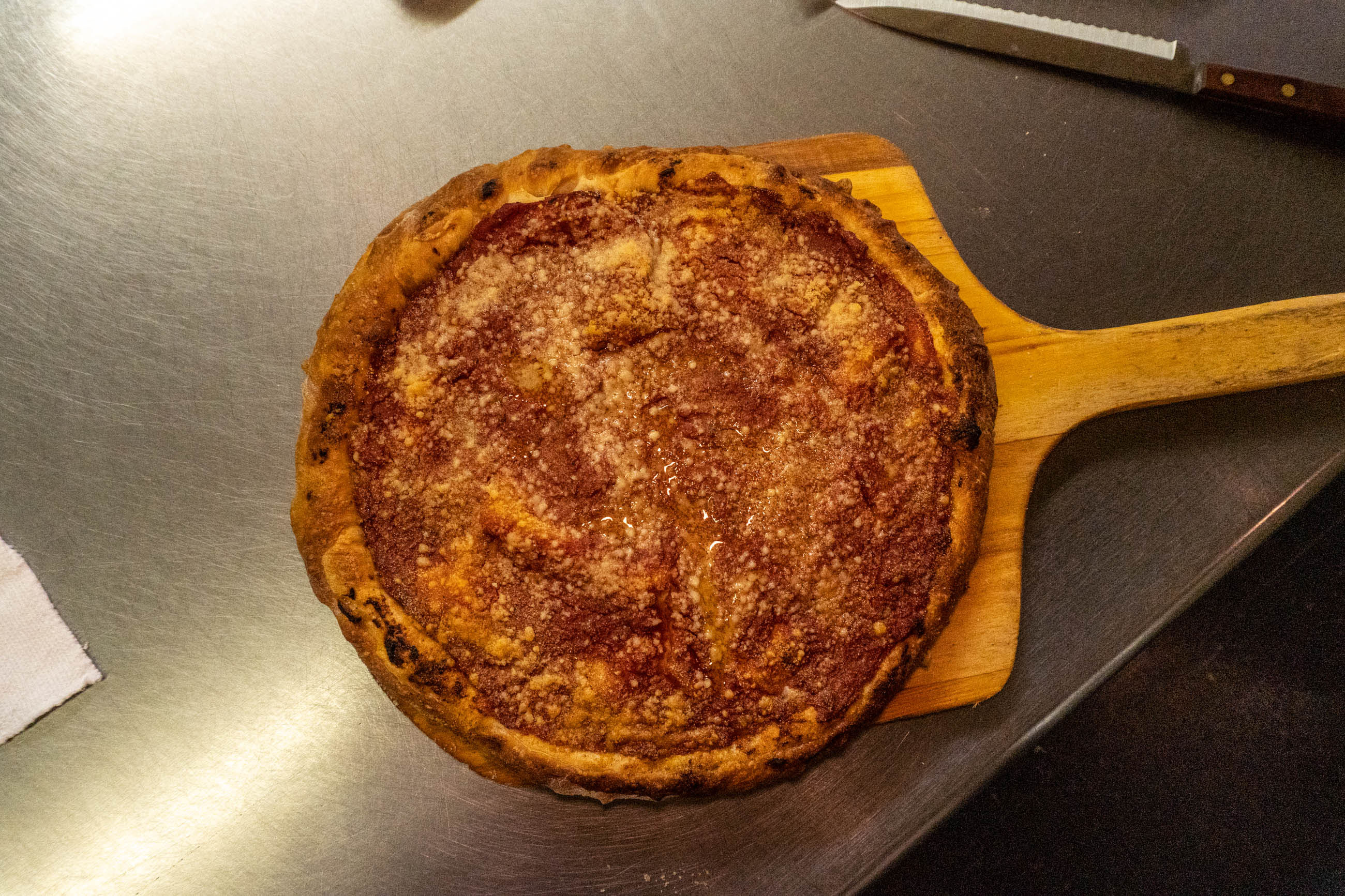

In the early 1980s, Monongahela Valley pizza shop owners Anthony DiDonato and Armand Forlini decided they wanted to make a version of the deep-dish pizza that was all the rage in Chicago. The only problem: They’d never actually tried the pizza, and in an era before the ease of finding recipes on the internet, they had to figure it all out themselves.
They didn’t come close. Instead, the duo created a pizza style unique to the area around Donora and Monessen. And over the next 40 years, DiDonato, who opened Anthony’s Italiano with his wife, Theresa, in 1977, perfected it.
It begins with a typical American-style pizza dough, which DiDonato makes every morning. First, he stretches the dough of the 16-inch pies (smaller versions are available, but this is the one you want) to the mid-thin thickness standard among Pittsburgh-area pizza shops. Then, he adds a thick layer of a provolone-mozzarella blend and any toppings you might like. Here’s where things get wild: DiDonato then adds a thinner second dough above the cheese, crimping it to the base crust at the edges. Finally, he scoops a zesty, uncooked homemade sauce atop the pie. He bakes the hefty concoction for about 12 minutes, then adds another scoop of sauce and a sprinkling of hand-grated Romano and Parmesan cheeses prior to a final 3-minute bake.
The Mon Valley red-top might look like the polar opposite of a Neapolitan pie, but it has one thing in common with that style: You’ll need to eat with a knife and a fork. Sauce and cheese dominate here, and the second crust gives the dish a bit of a bread-and-pasta-casserole feel. Cheese gets into the part of the crust where the two edges are crimped, so you get a little stuffed crust situation to finish the experience. It’s as if pizza, lasagna and cheese ravioli had a conference, and pizza said, “I like both of you, but I’m the best.”
557 McKean Ave., Donora; anthonysitaliano.com
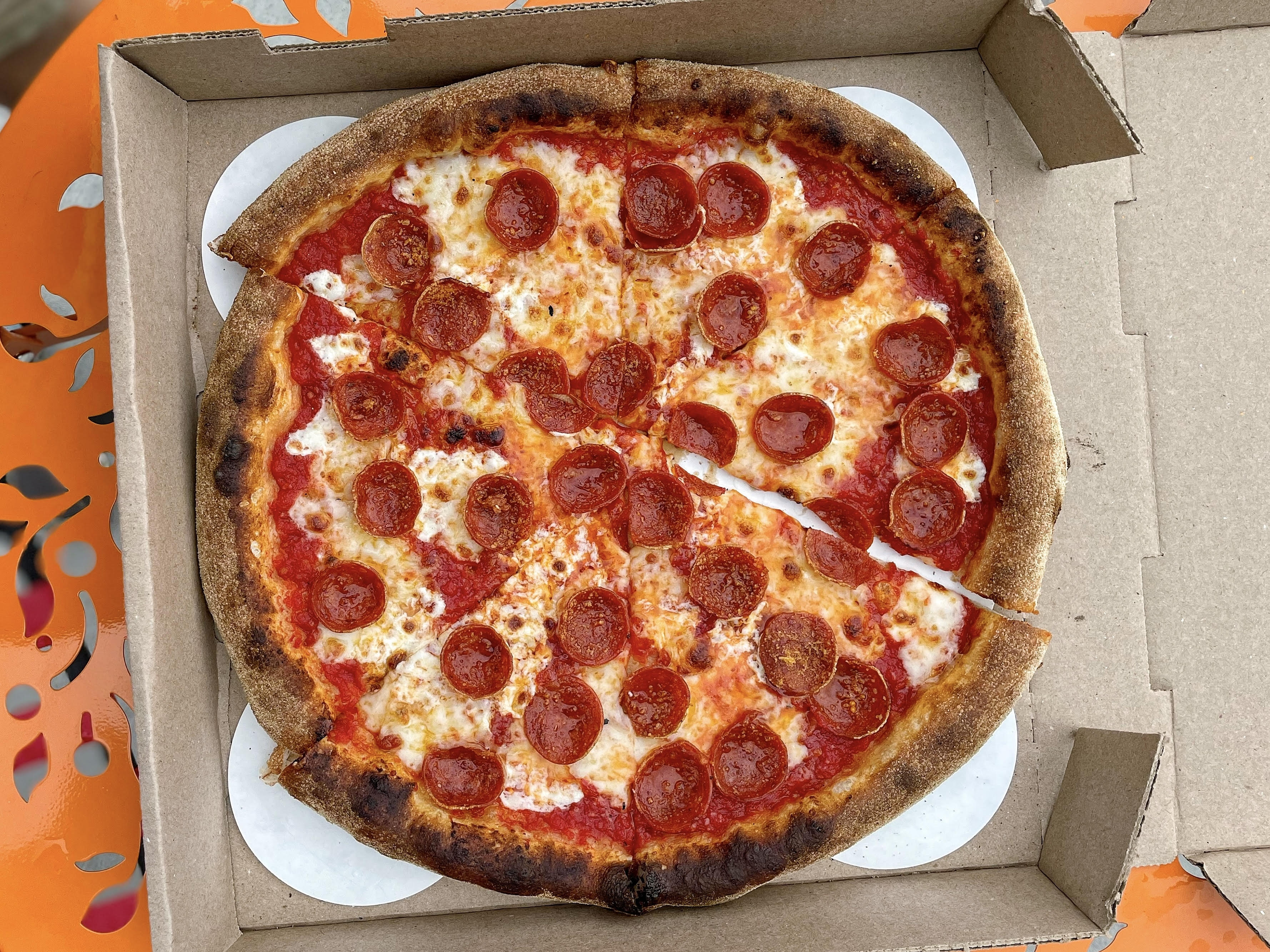
Patrick and Mandy Elston started making pizza at home because they wanted something that was a step up from the available takeout and delivery options. Not long after they started, Patrick, a former municipal employee, found himself walking down a long road of dough structures, hydration levels and oven temperatures, not to mention multiple home pizza ovens. Eventually, Elston’s hobby became a career, and then Mandy (and other family members) took to the trade, too. First, there was the pizza truck they operated from 2017 to 2021, then the couple opened the brick-and-mortar location of Gus Franco’s (named after their two children) in Lower Burrell.
Elston serves a hybrid spin on neo-Neapolitan pizza that is meant to appeal to the neighborhood. There’s a respect for the history and tradition of pizza and curiosity for the craft to make it part of the modern era. He uses a 50-50 mix of 00 flour (the kind you’d find in a classic Neapolitan) and high-gluten bread flour and typically hydrates it to just below 70%. He ferments the dough for at least 48 hours but prefers to use it when it’s done for 72.
When it comes out of the 850-degree oven after a 2-minute or so bake, it’s wafer thin, almost see-through, yet still has a good amount of structure. The edges are tender and airy, with a little bit of crispness. Semolina, which some pizzaiolos use as a crutch to help cast the pie into the oven, almost always is invasive in mouthfeel. Yet, because Elston’s pizzas are so slender, it adds a lovely delicate crunch that helps with the body of the pie.
Elston makes a simple sauce of ground Jersey Fresh tomatoes and salt and is restrained with toppings. It’s a remarkably balanced pizza. You can taste all of the flavors in the Margherita without any component overpowering another. With Bianca, a white pie with mozzarella, Parmesan, ricotta, shaved garlic, cherry tomatoes, fresh basil, sea salt and extra virgin olive oil, there’s sweetness from the ricotta and a punch from the slivers of garlic, with a pop from the tomatoes. Again, you can taste every ingredient and how they blend.
The pizza at Gus Franco’s is best eaten when it’s fresh out of the oven — there’s limited seating outside the shop — but it also reheats beautifully in a cast-iron pan. And, as you’ll come to expect from this charming establishment where friendly little gestures are part of the package, instructions, complete with cartoon graphics, come with the pie.
2637 Leechburg Road, Lower Burrell; gusfrancospizza.com
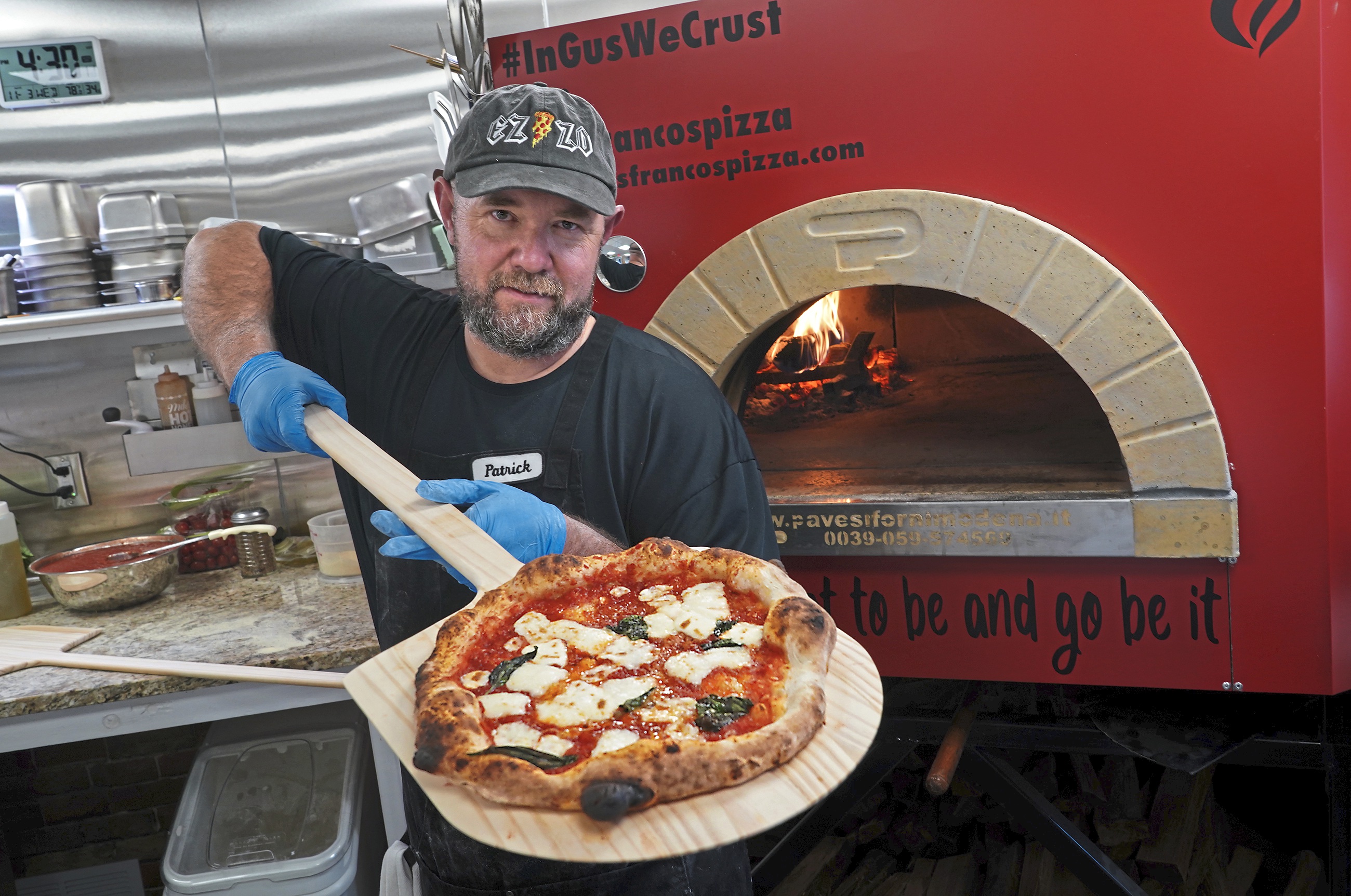

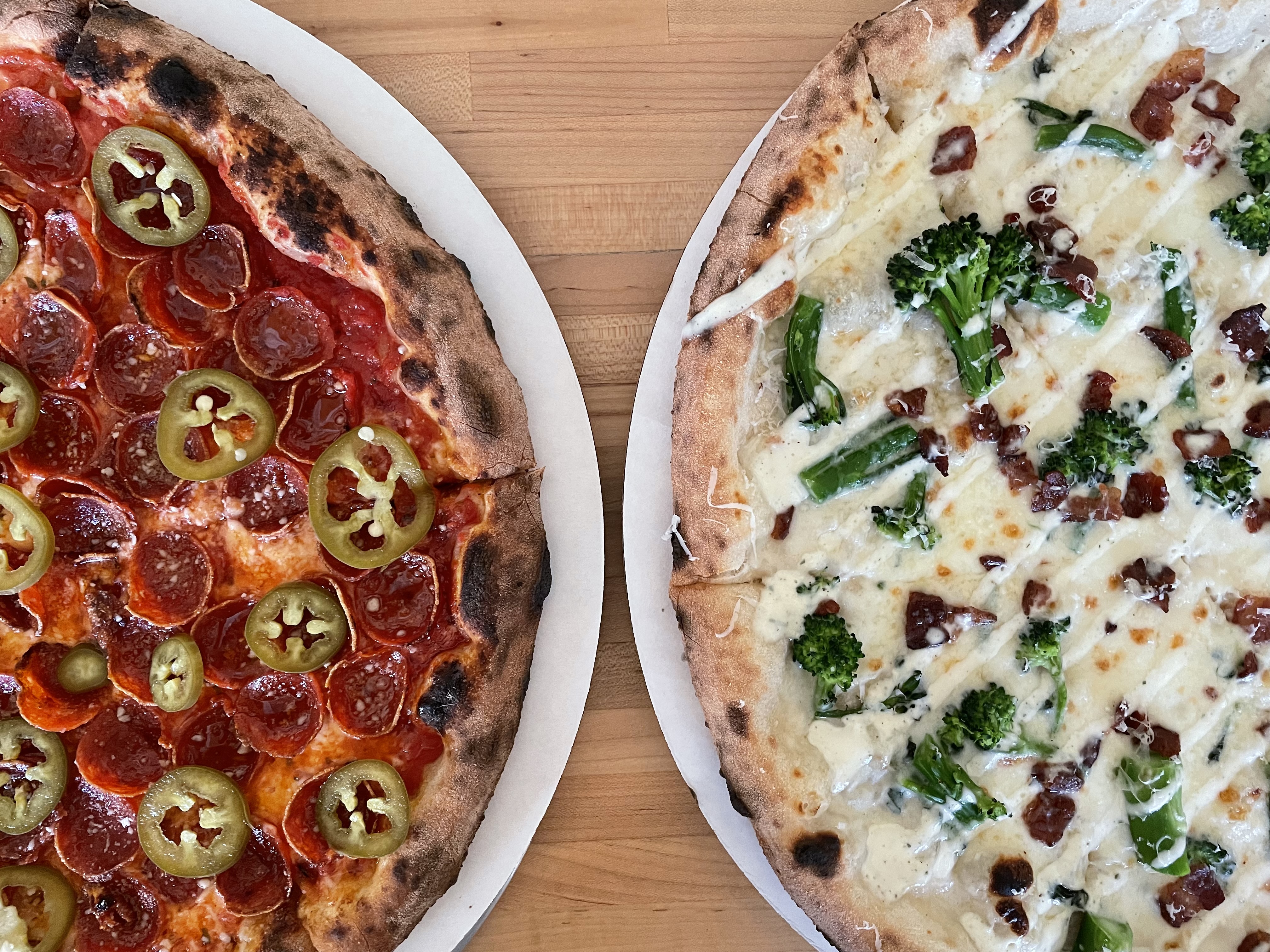
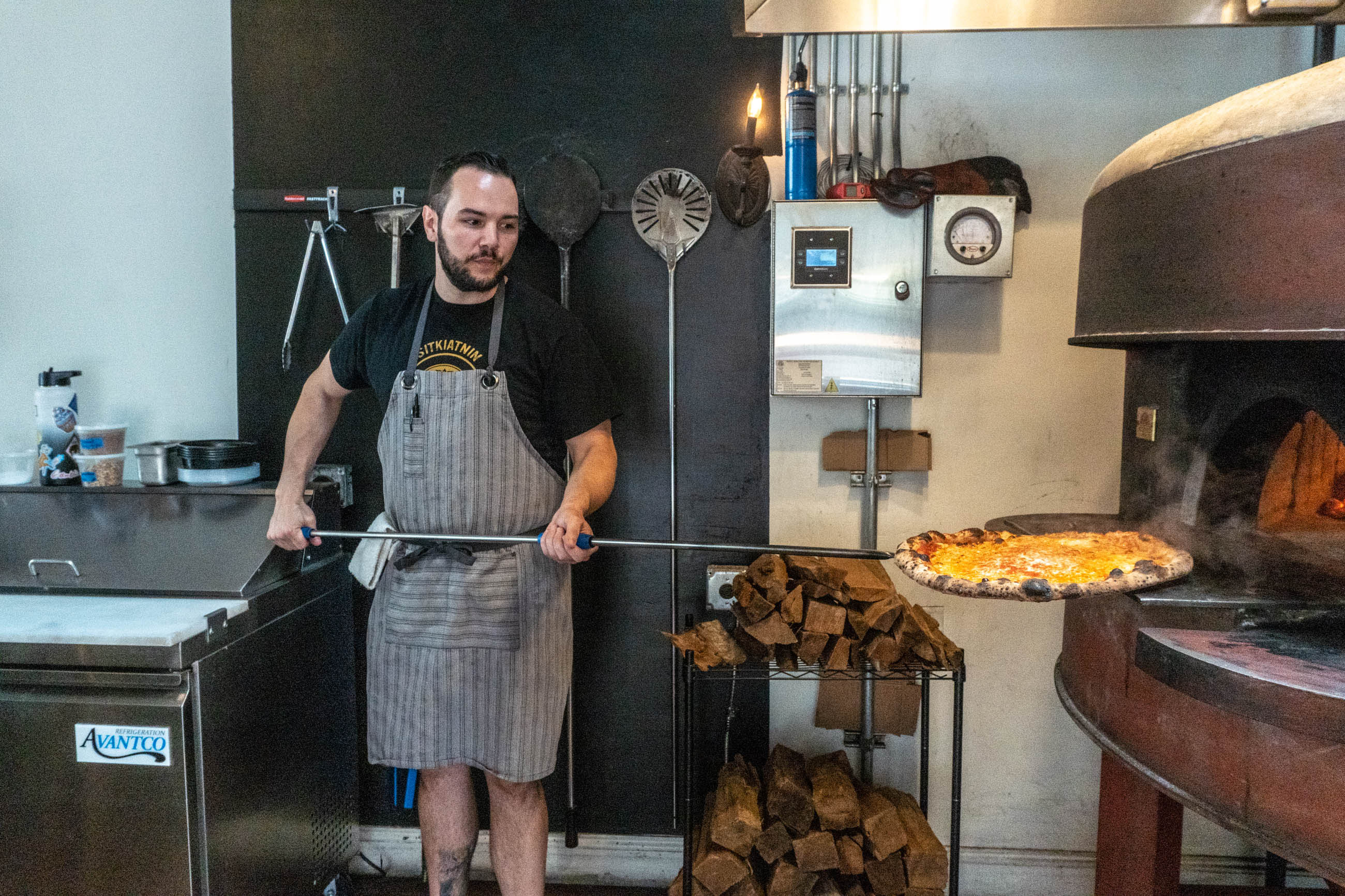

It took about a year for Woodfired by Lorelei's pizzaiolo, Dan McGhee, to get the hang of the nuances of making outstanding pizza in the Italian-built wood-fired oven in the Highland Avenue space previously occupied by the highly regarded Pizza Taglio from 2015 to 2020. He experimented with fermentation times (it's longer now), yeasts (now a natural starter) and flour mixes to get the structure of the dough where he wanted it.
Those pies, which cross American baker-style with neo-Neapolitan, cook for about 2 minutes in an 800-degree oven. There’s proper leoparding on the bottom of the crust and punctuation of char on the edges that accentuate the flavors of the elegant toppings made from quality ingredients, and everything is evenly cooked. So when you take your first bites, there’s a little crispness and a little tug.
Woodfired offers a menu of eight to 10 14-inch pies that appeal to a wide variety of tastes, and this is the kind of joint where you’ll want to check out a special pie of the week.
McGhee is weaving his chef’s background (he worked at Morcilla, Scratch and Co. and Independent Brewing Co. before a tenure at the tasty Detroit-style Iron Born Pizza) for a rotating, ever-evolving selection of specials. During the growing season, he works with local farmers such as be.wild.er Farm to source ingredients.
In June, a broccoli pie featured tender-crisp broccoli, homemade ranch with a buttermilk pop and bacon crisped just as it should be. The toppings were judiciously added so that you could taste each component. They do a good job exercising restraint in the cheese (a mozzarella-provolone blend for some, Caputo mozzarella for fresh), which allows the dough and the toppings to shine.
134 S. Highland Ave., East Liberty; woodfired-pittsburgh.com
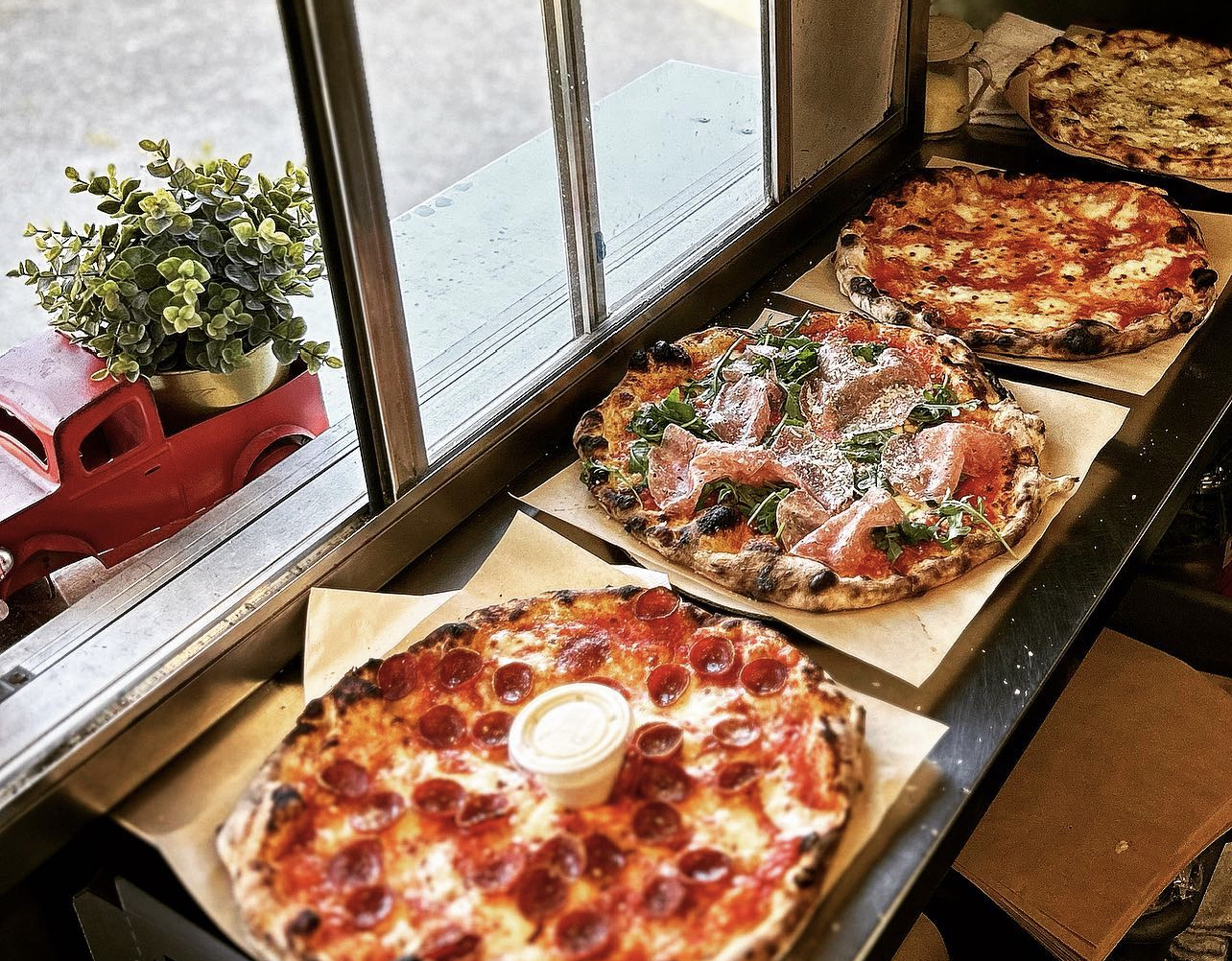
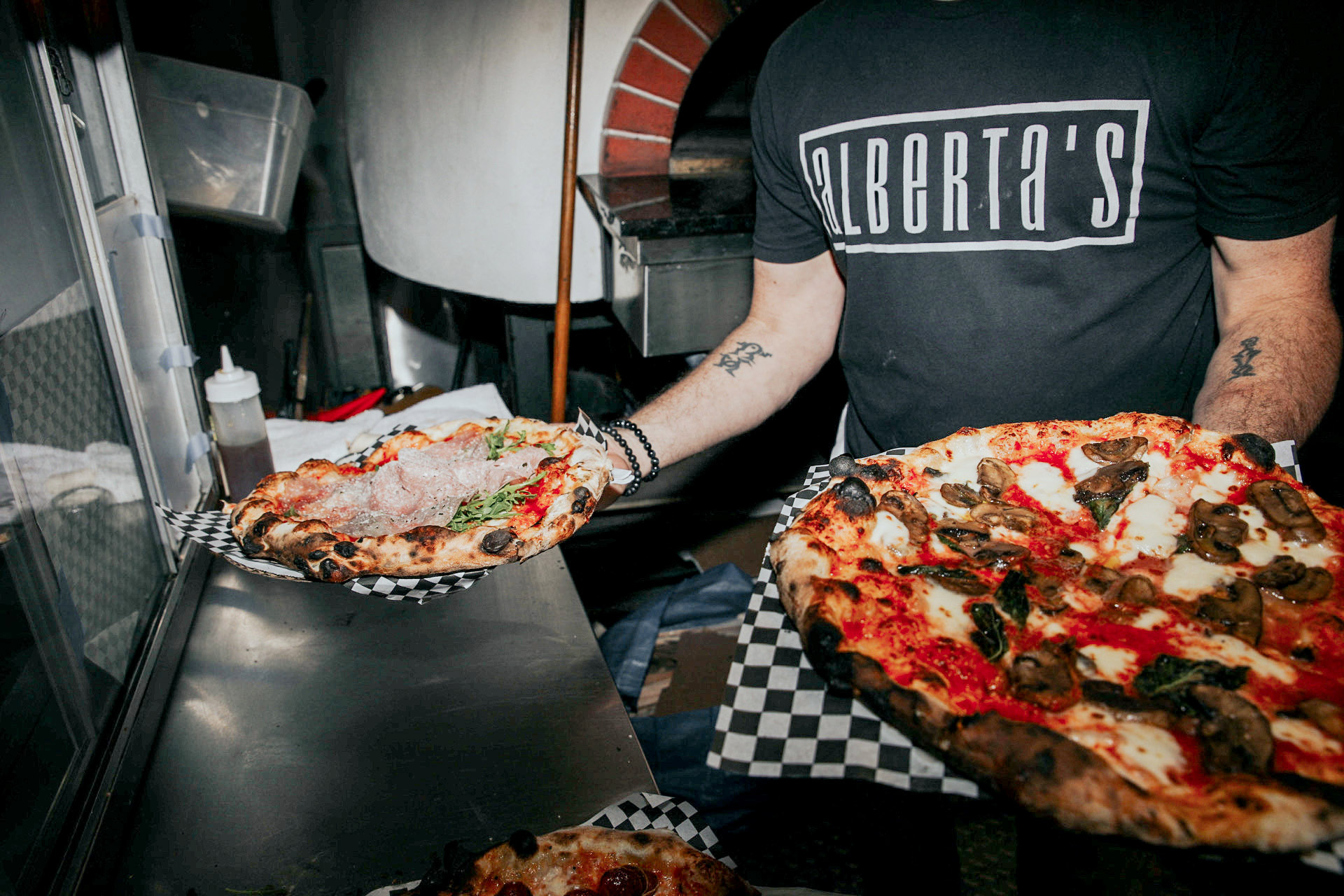
Beau Mitall’s journey into the pizza world was as slow a burn as the hardwood he uses in the portable oven built into the black Alberta’s Pizza truck he’s parked in front of Pittsburgh breweries and special events since 2016. Follow the effervescent aroma of smoke and baking dough to blissful bites.
Mitall grew up in Pittsburgh and moved to New York City in young adulthood to forge a career as an artist. Gorging on pizza wasn’t on his to-do list, even though he was in a city famous for it. Mitall says he finds the typical American slice joint leaves him feeling heavy. Nevertheless, he would visit some of the city’s iconic coal oven establishments, such as John’s of Bleecker Street and Arturo’s, when prompted by his pizza-loving stepfather.
Only after Mitall moved to South Africa with his wife did he miss what used to be at his fingertips. So he began making pizza for staff meals at his wife’s cafe. They weren’t great, but it was enough to give him the itch to perfect the craft that lingers in the minds of the best pizza makers. When his family returned to New York, he truly got into it, inspired by how vibrant he felt after eating Neapolitan pizza at a restaurant on St. Marks Place.
Mitall decided to make pizza a career when he returned to Pittsburgh in 2015. He hewed as close to the Neapolitan tradition as possible – minimal toppings, ultra-thin crust, lots of char.
Over the past year, he’s begun to forge his own path – what he calls “old fashioned pizza” – by making subtle changes, including a weightier dough ball, lower cooking temperatures, longer cooking times and a dose of natural leavener in every batch.
What hasn’t changed is Mitall’s commitment to the process. He hand mixes every batch – enough for 40-45 pizzas per – and adjusts hydration percentage and fermentation time by feel. Those pies are long fermented, with 24 hours in bulk fermentation. They’re individually balled about eight hours prior to service.
You get thin, soft, chewy pizza with a bold umami oomph from the just-about-charred undercarriage. The specific topping builds vary week by week, but always adhere to the mantra that less can be more for building balance. Mitall’s straightforward red sauce, sweet and tangy, ties the pie together.
Look to Alberta’s website and Instagram page for the weekly schedule of where the truck will be. And start getting excited for a standalone Alberta’s that will open sometime next year.


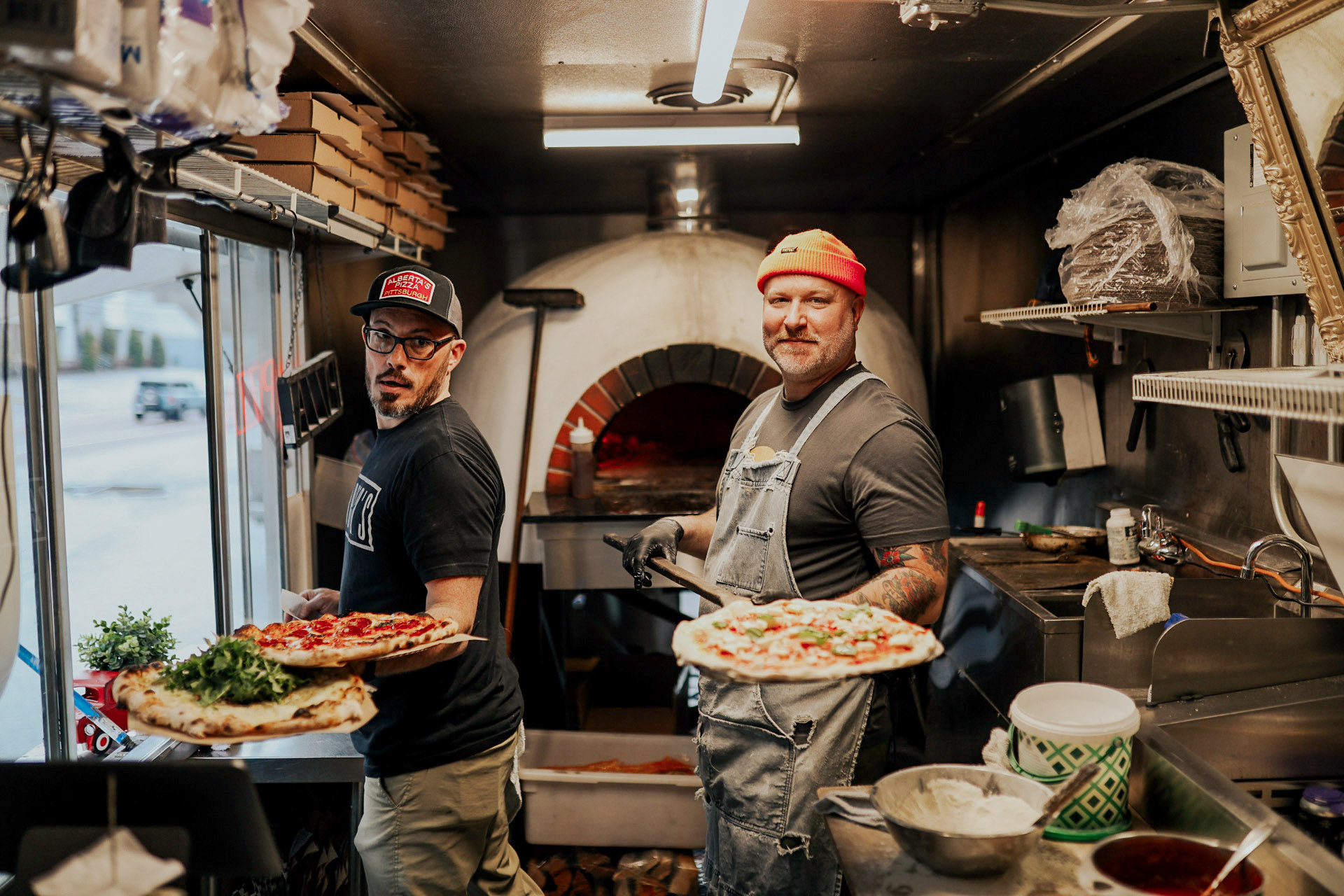
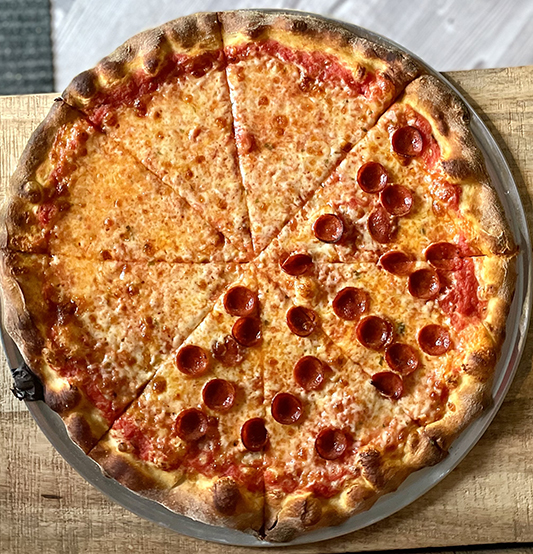
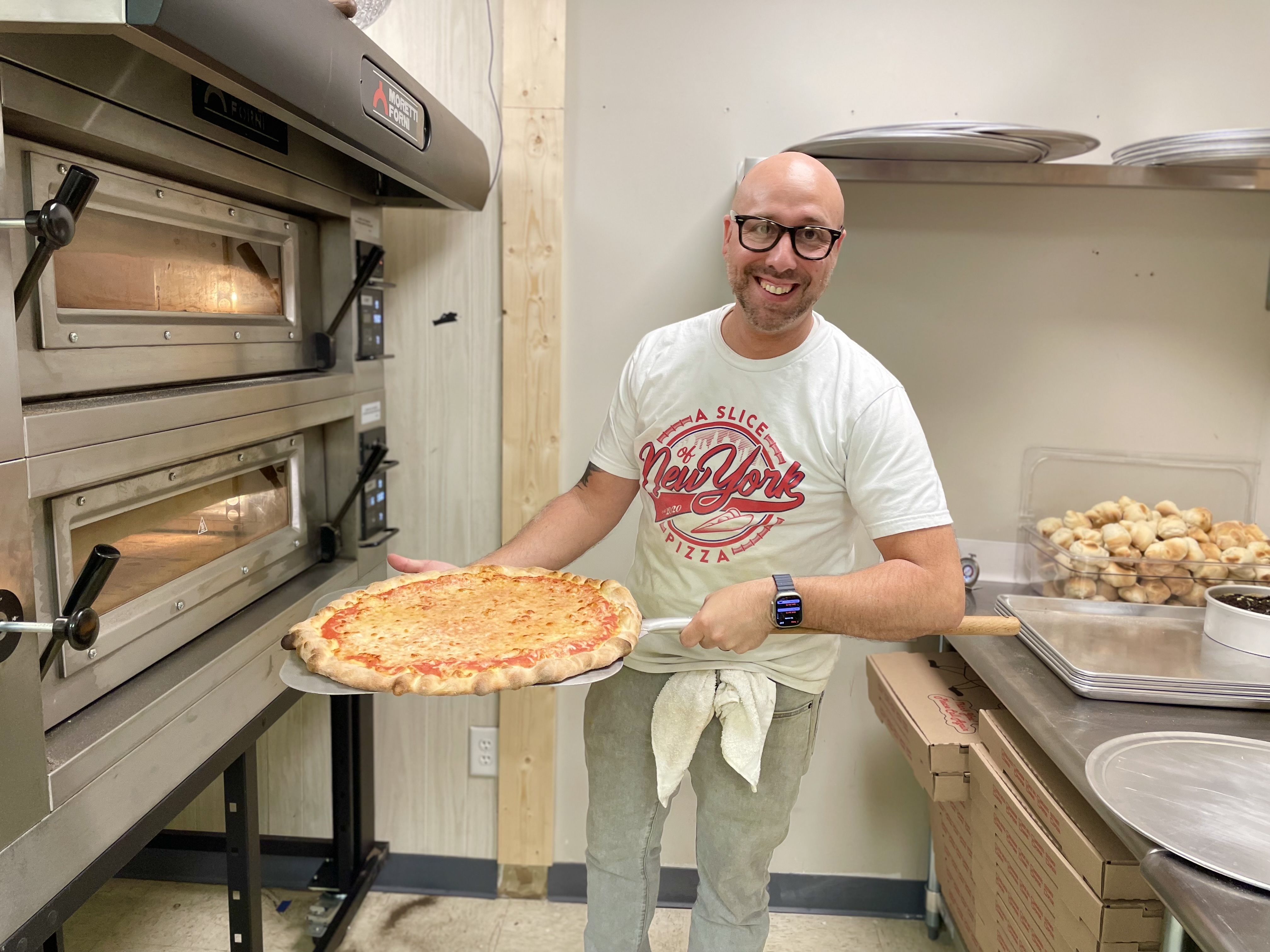
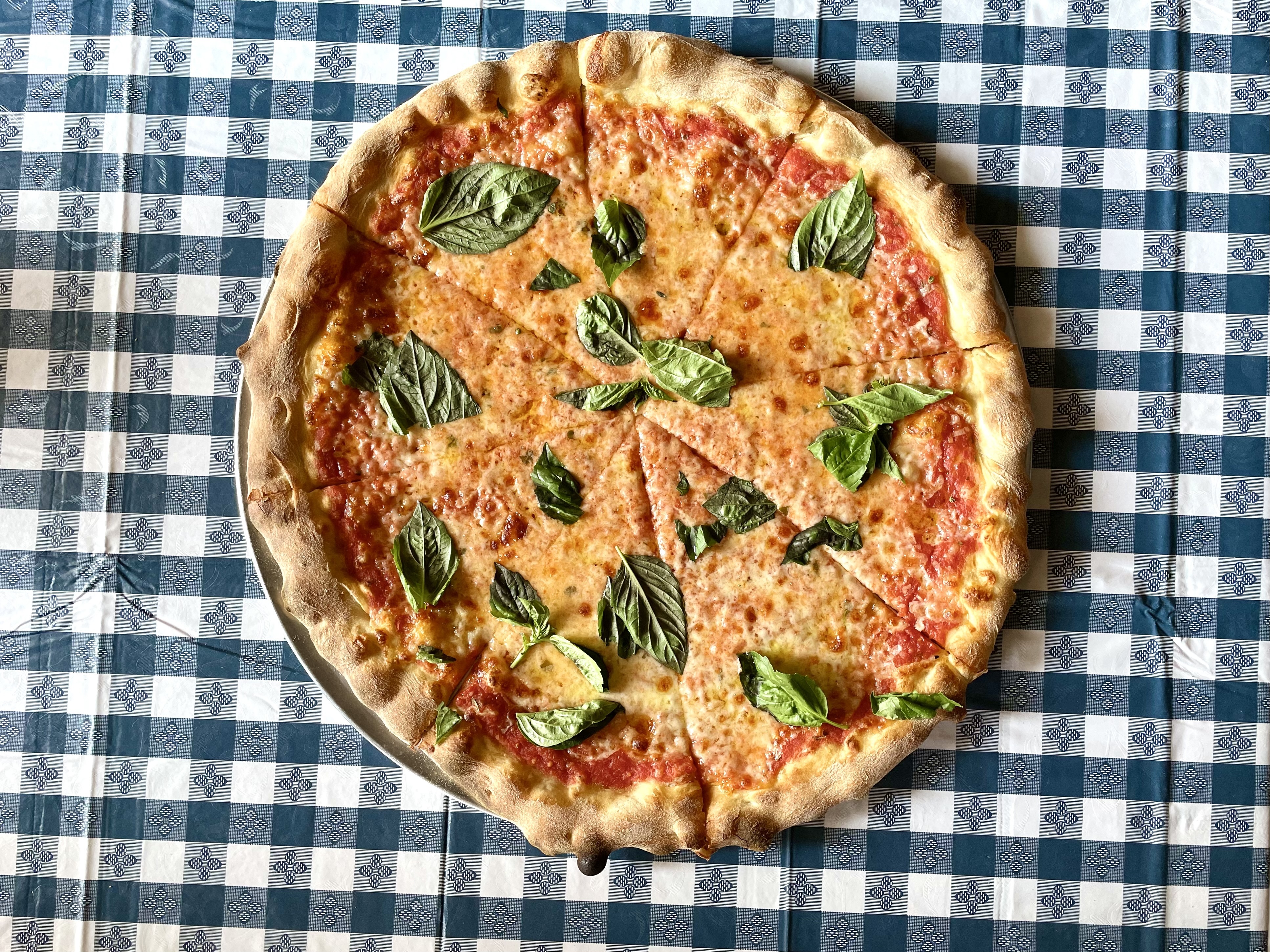

It’s common for pizzaioli to form a deep devotion to their craft; everybody on this list fits into that category. Sean Jefairjian, owner of Slice of New York Pizza, is “wake up in the middle of the night to scribble notes and maybe make a small batch of dough” obsessed. He’s constantly experimenting, tweaking, honing.
Jefairjian embarked on his pizza parlor dreams in 2020. And a move to a larger location in Murrysville earlier this year launched him into the orbit of elite Pittsburgh-area pizza makers.
He is process-oriented, looking to pizza masters such as Dan Richer, owner of New Jersey’s Razza and co-author of “The Joy of Pizza: Everything You Need to Know,” to use blind-tasting rubrics to select ingredients that serve to coax the very best for the whole balance.
Jefairjian grew up in the Bronx and prepares a pie instantly recognizable and emotionally evocative to a New Yorker.
The crust is thin, but not paper, and easy to fold, yet with some crispness to the bite. The sauce is bright and tangy, made with Bianco DiNapoli tomatoes from Northern California. He uses Sopra low-moisture mozzarella, the classic melting cheese for the New York style, to keep the pie in harmony.
He bakes his pizza in a new two-deck Moretti Forni oven with top and bottom stones that ensure even baking and allow for quick turnaround. The bottom of the pie offers a satisfying tug and chew. At the same time, the crust’s cornichon carries a distinct “hilltops” character as Jefairjian uses his fingertips to make little ridges at the edges prior to baking.
Reheated (a common practice in a New York slice shop), the pizza takes on an enjoyably crunchier feel that still allows for a traditional NYC fold.
Just prior to press time, Jefairjain, who says he’s always aiming to push the limit of what he’s doing, made a bold change to his process.
He’s now using a sourdough starter rather than a biga (a pre-ferment using dry yeast) and swapped in flour with a slightly lower protein content. With these changes, his still-outstanding pizza is now straddling the line between a New York City pie and that of the new American baker.
5656 State Rt. 22, Murrysville; asliceofnewyorkpizzeria.com
Hal B. Klein: hklein@post-gazette.com, Twitter @halbklein and IG @halbklein.
Hal B. Klein
Joseph Phillippi
Hal B. Klein
Joseph Phillippi
Ed Yozwick
Laura Malt Schneiderman
Advertisement
Advertisement